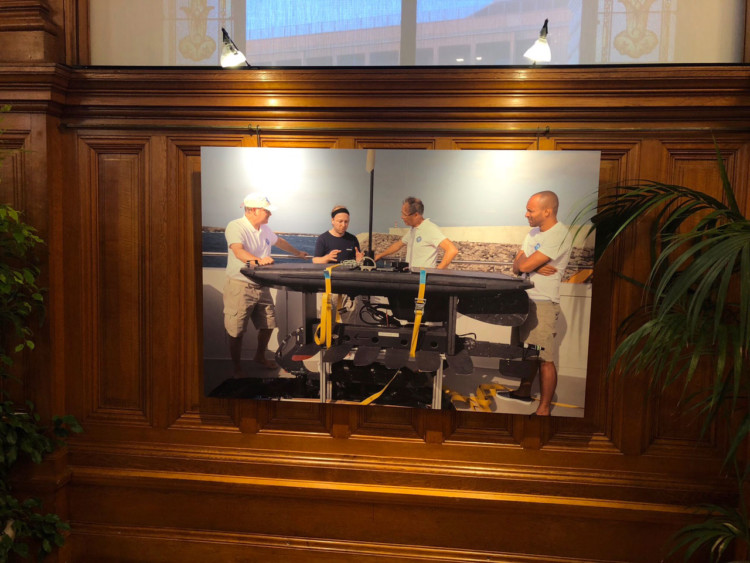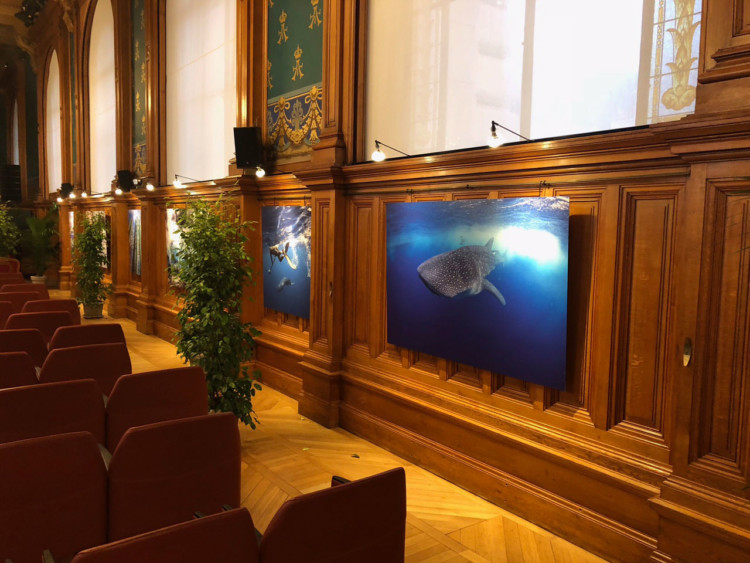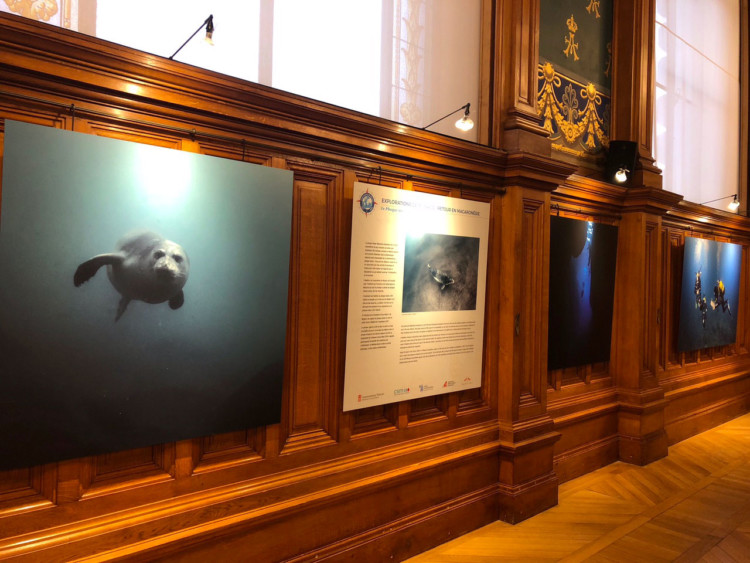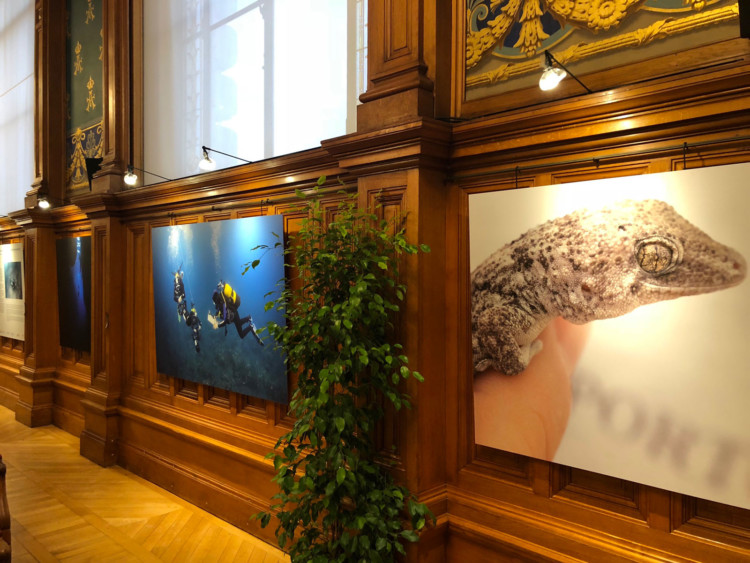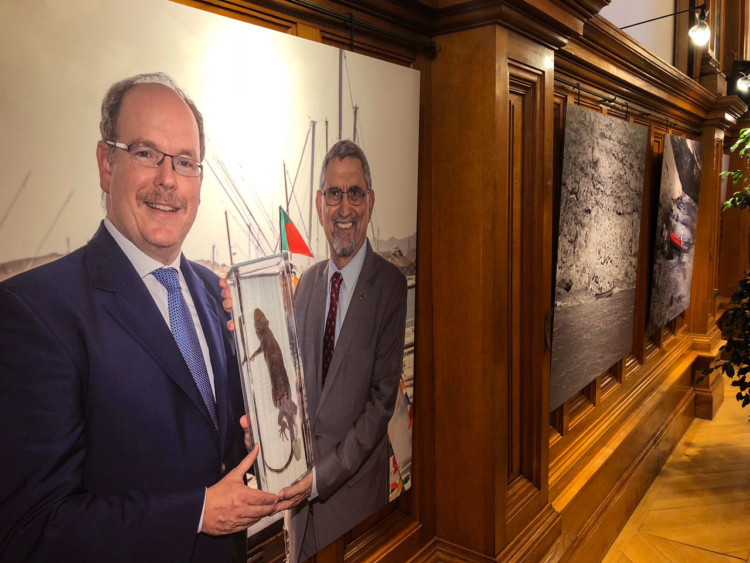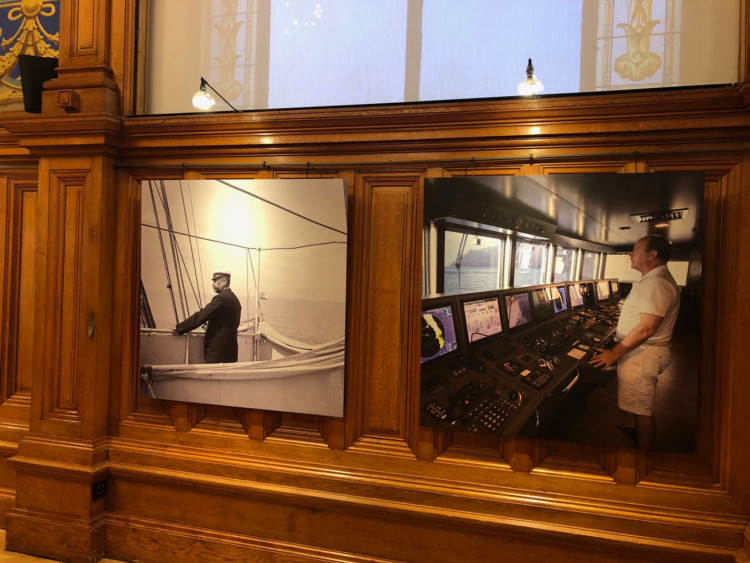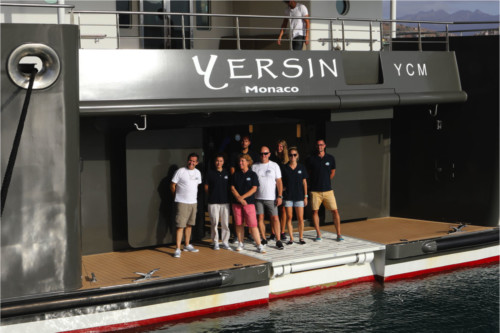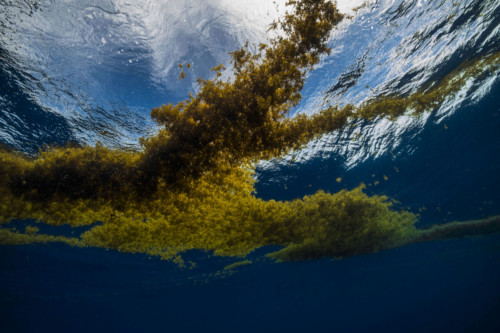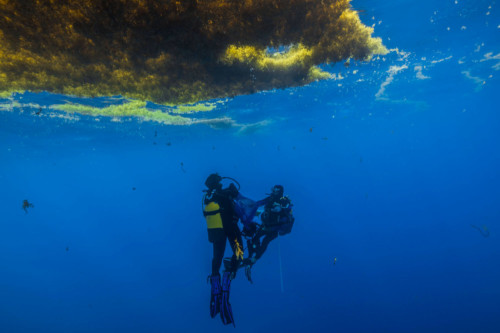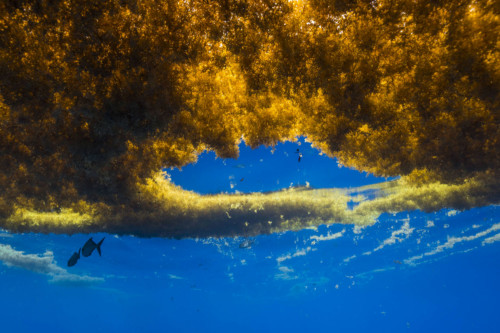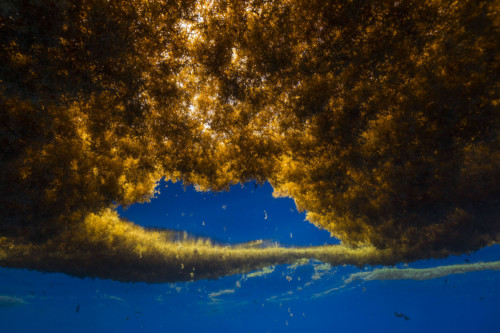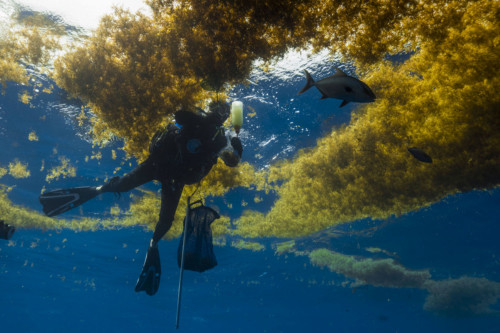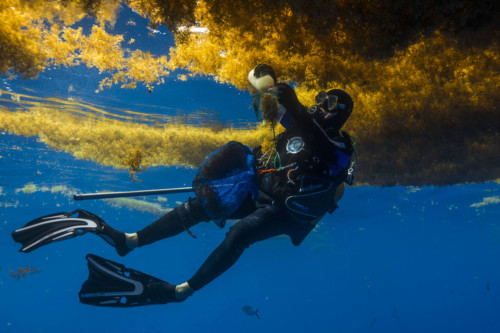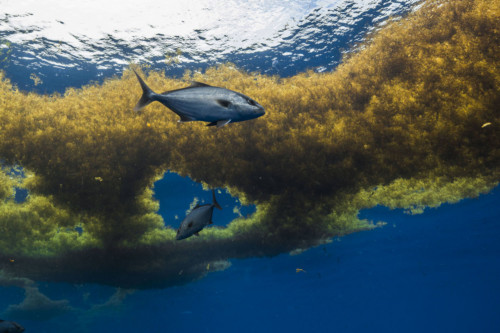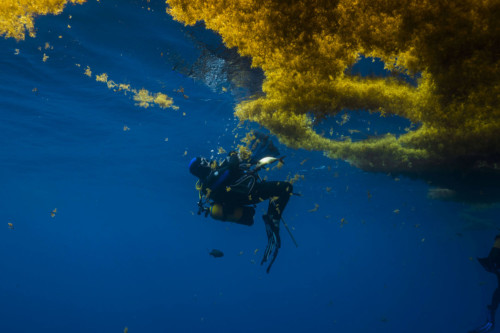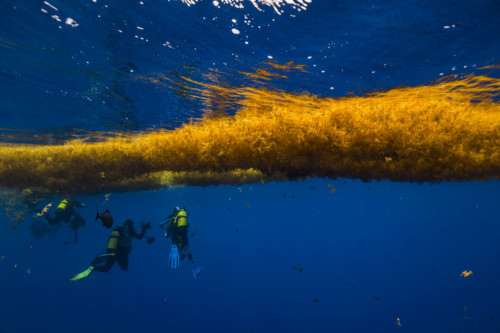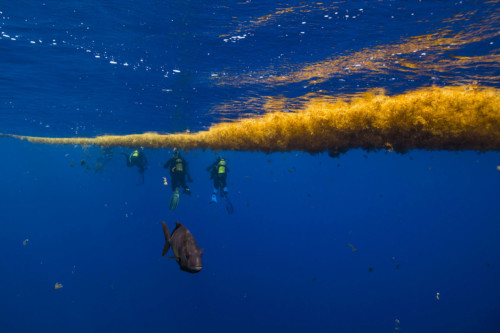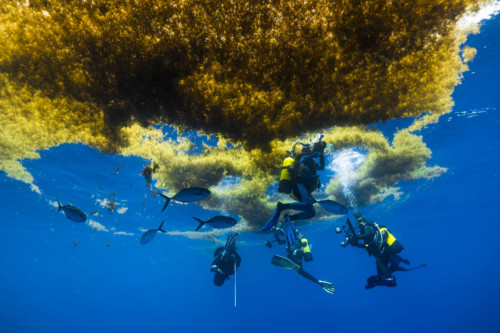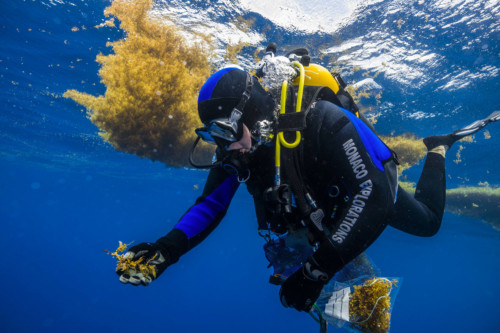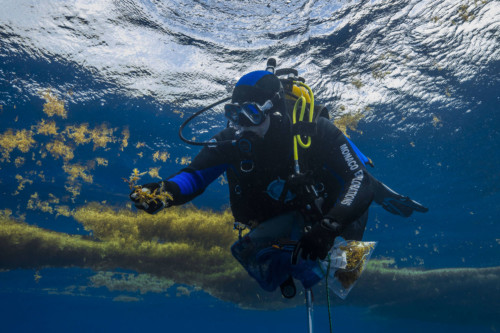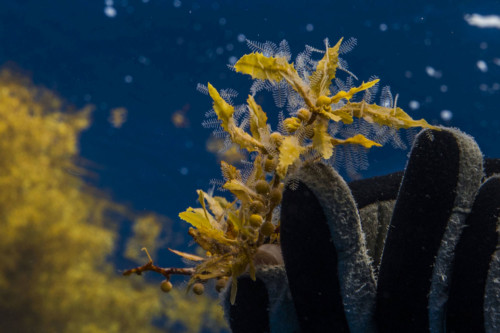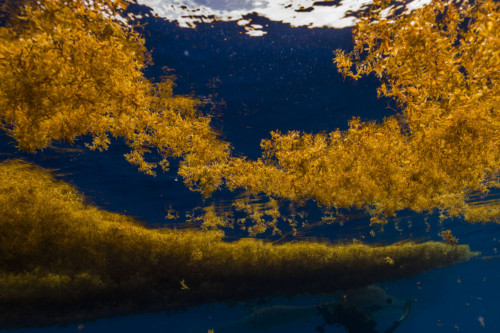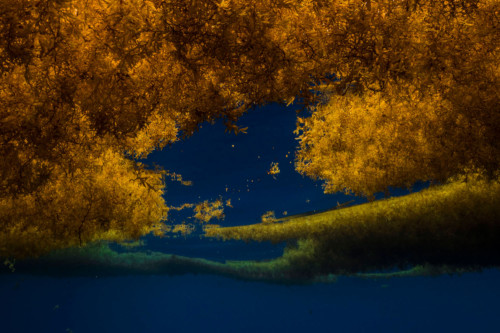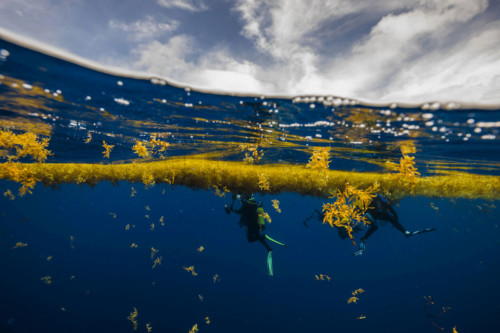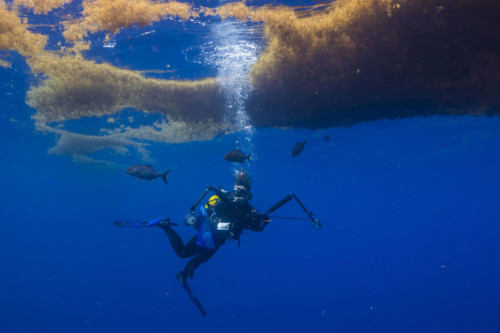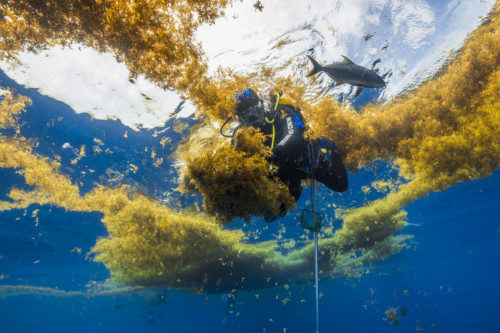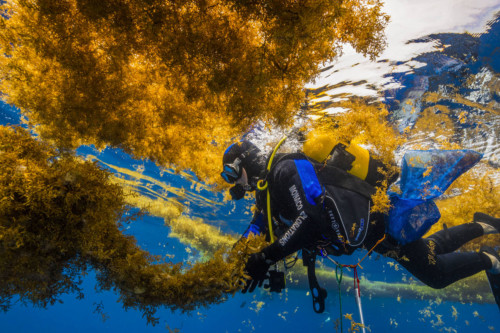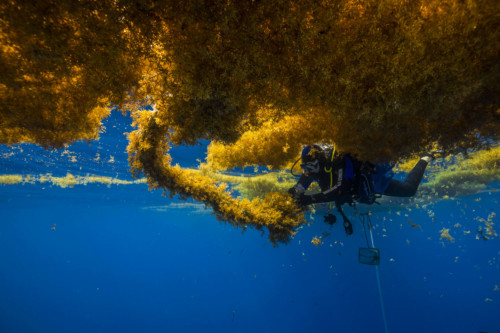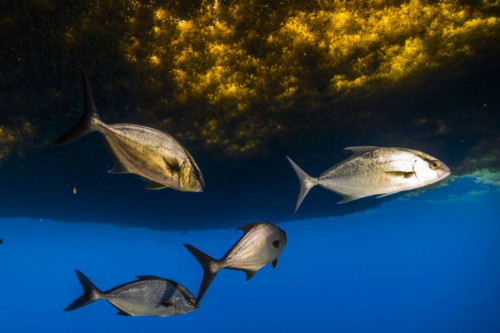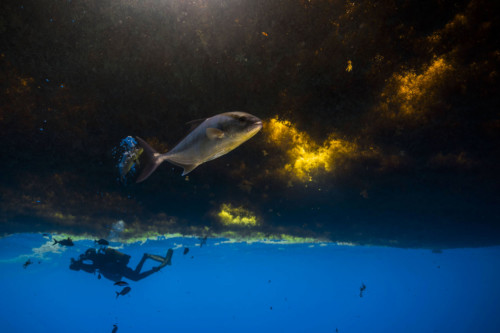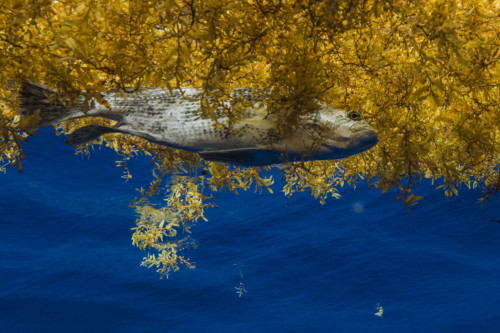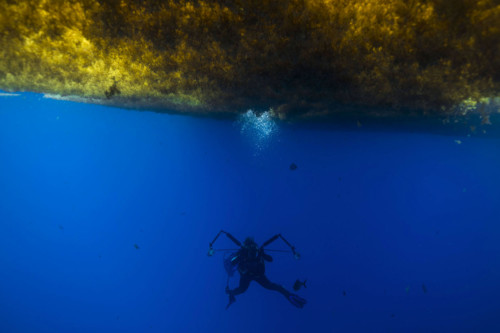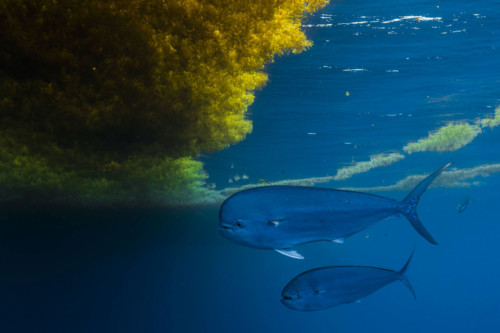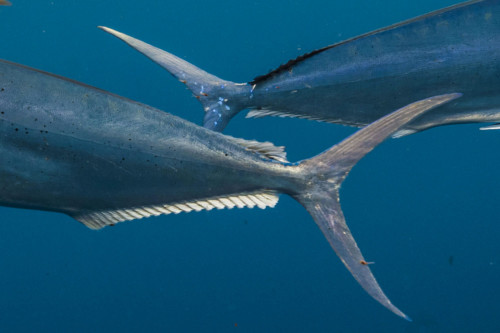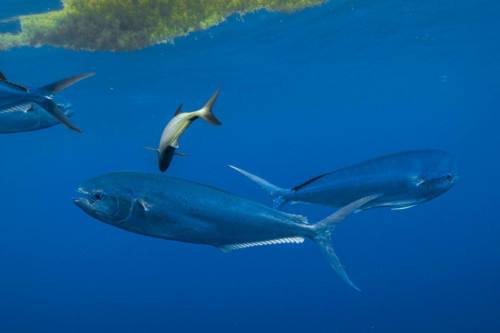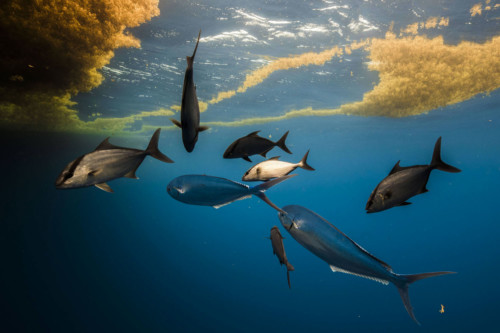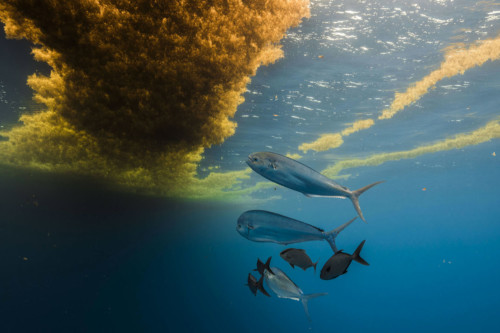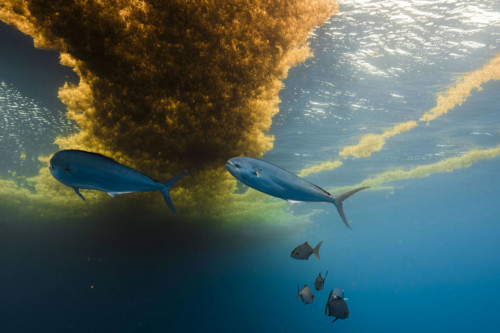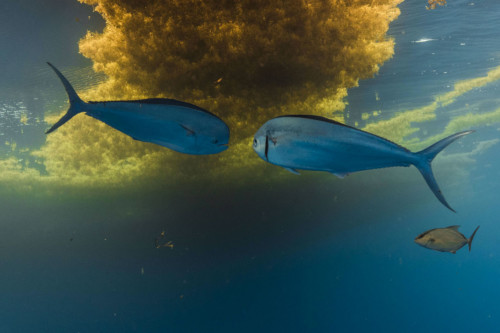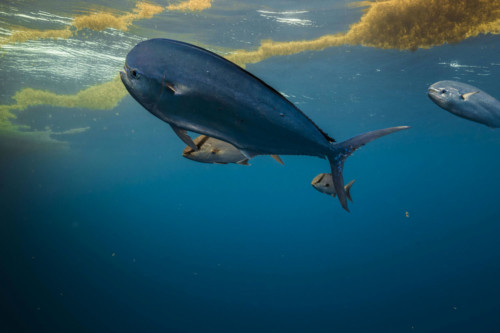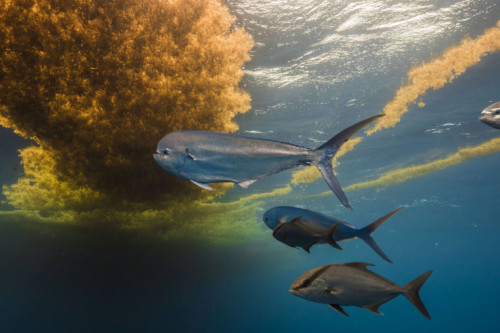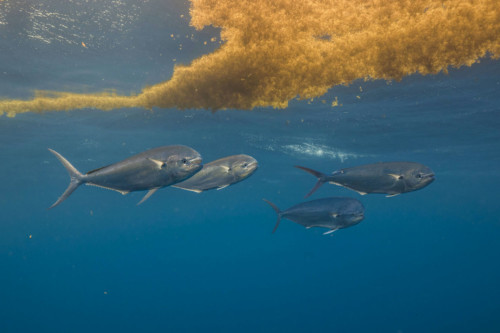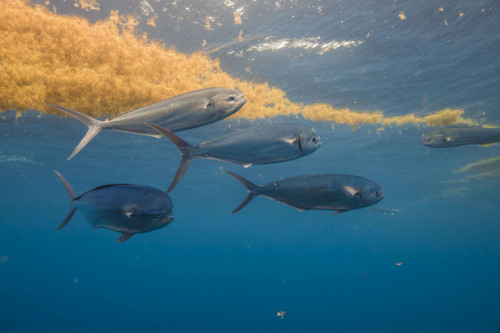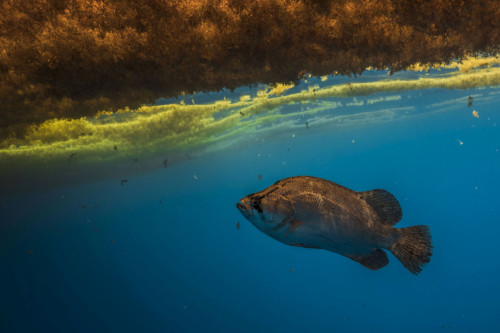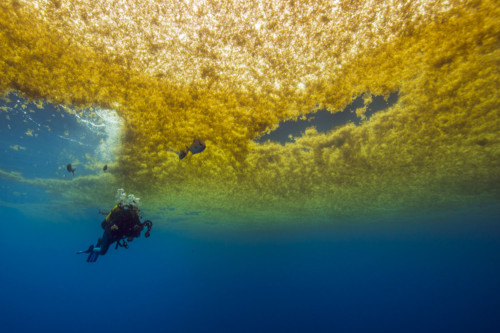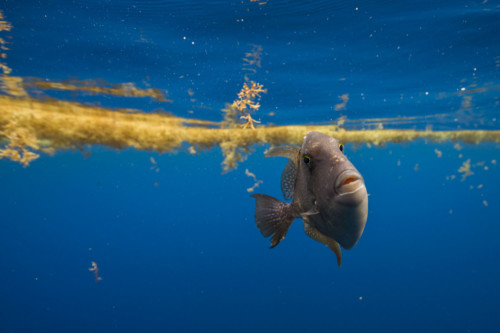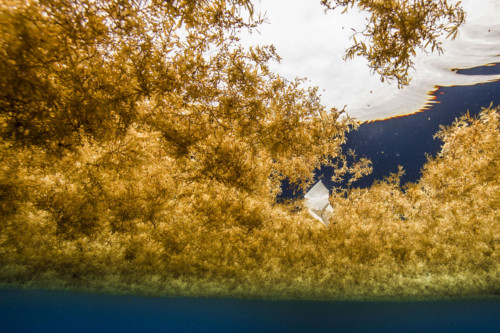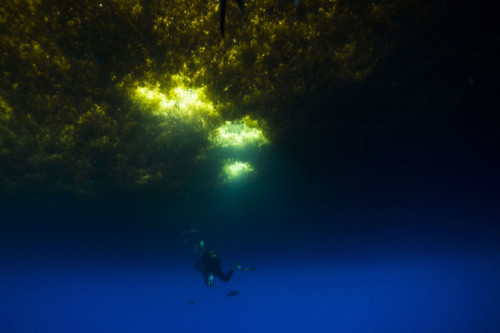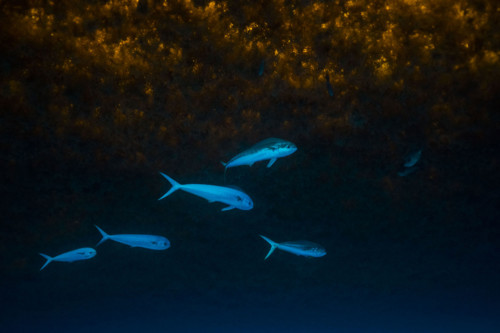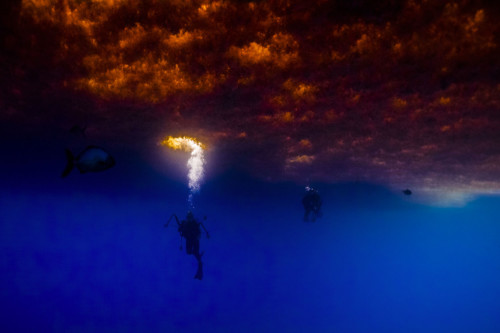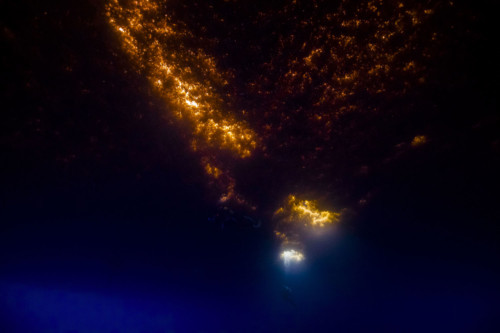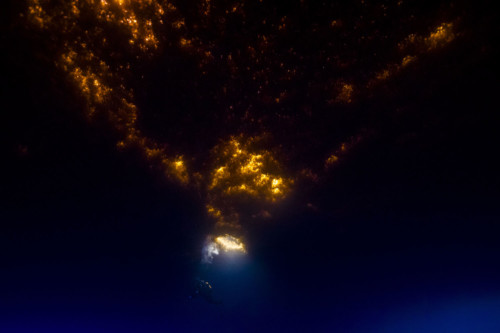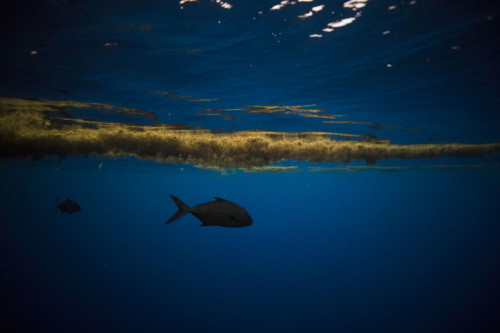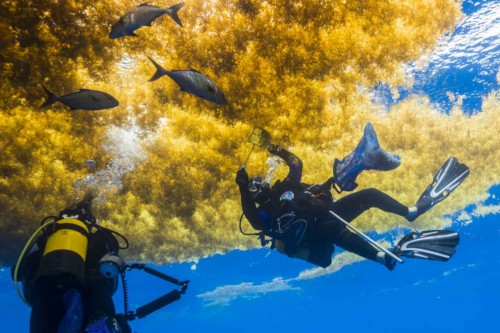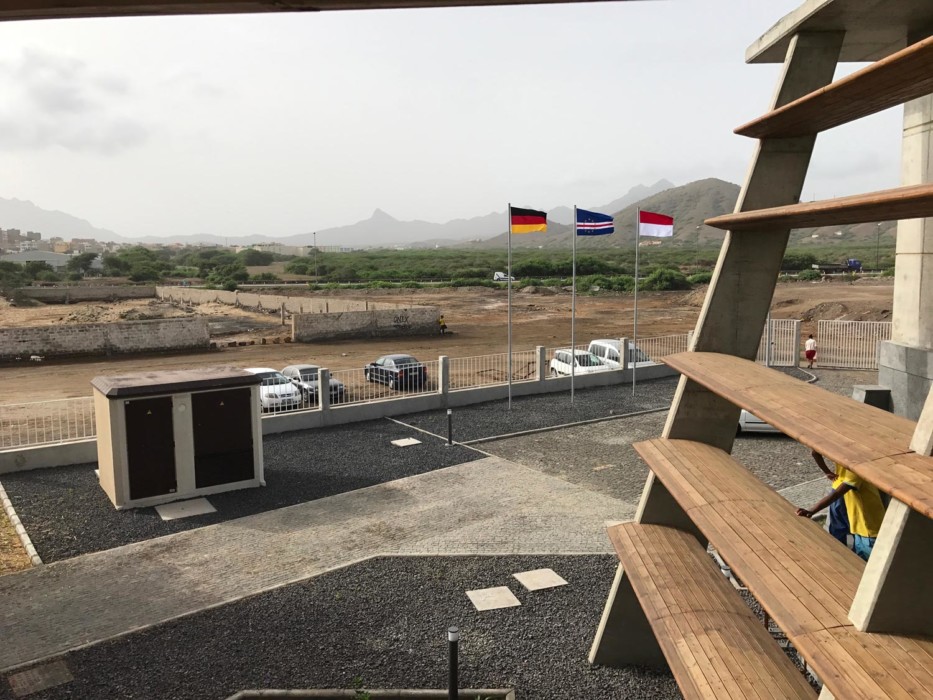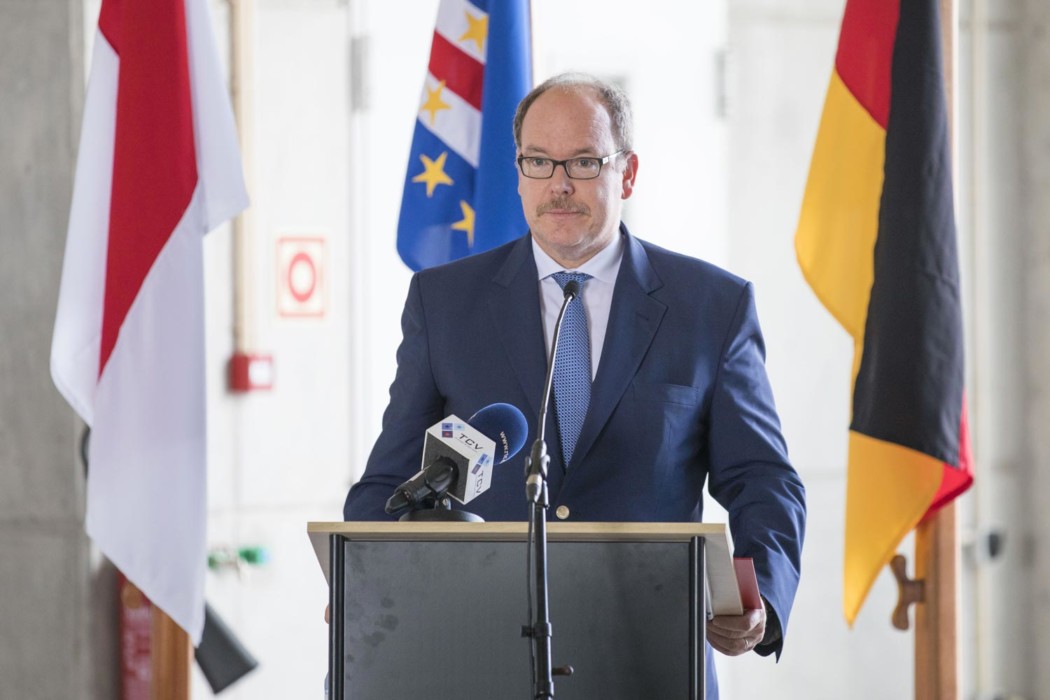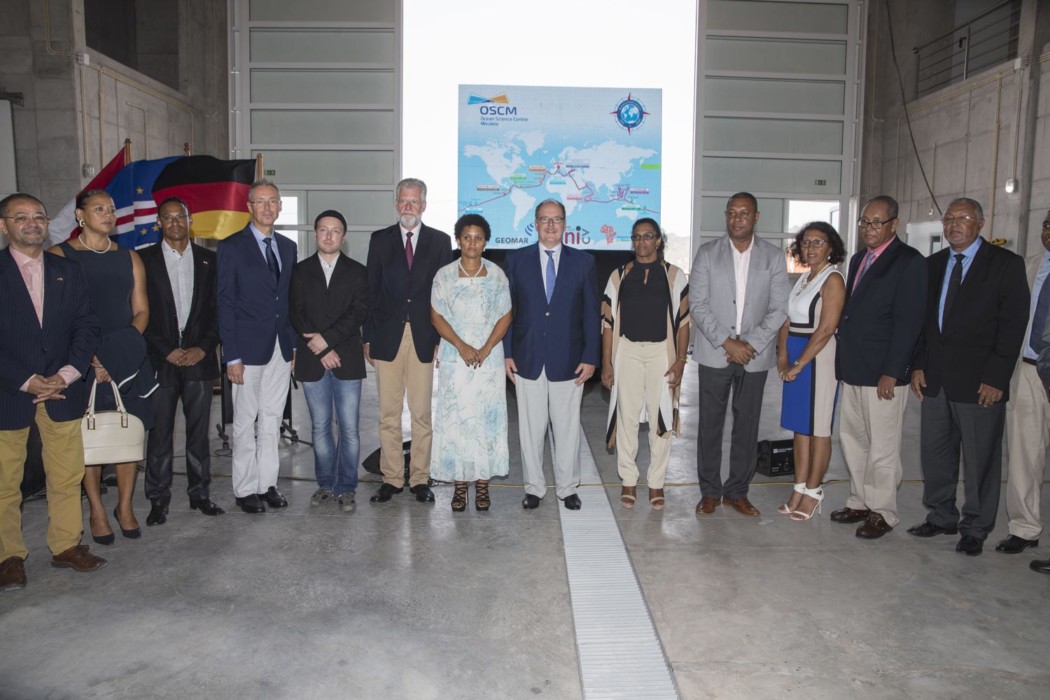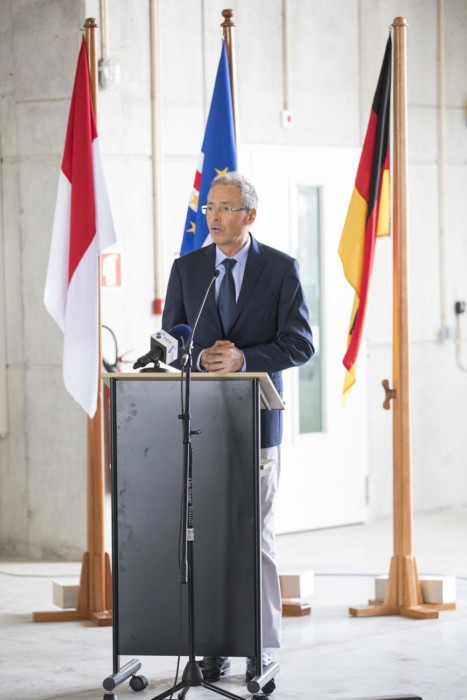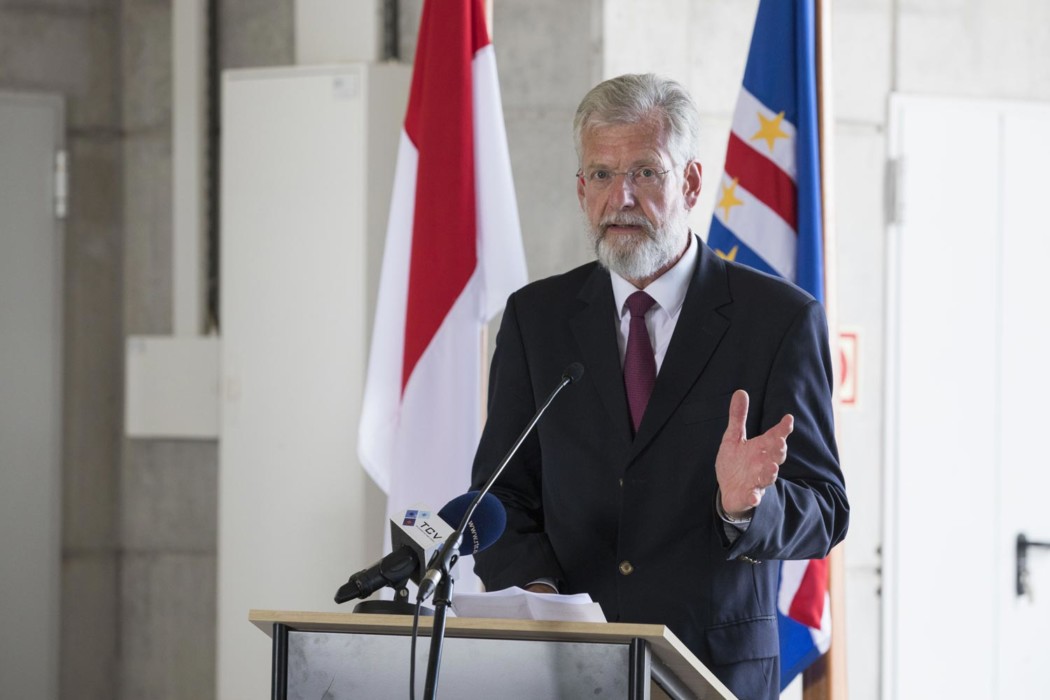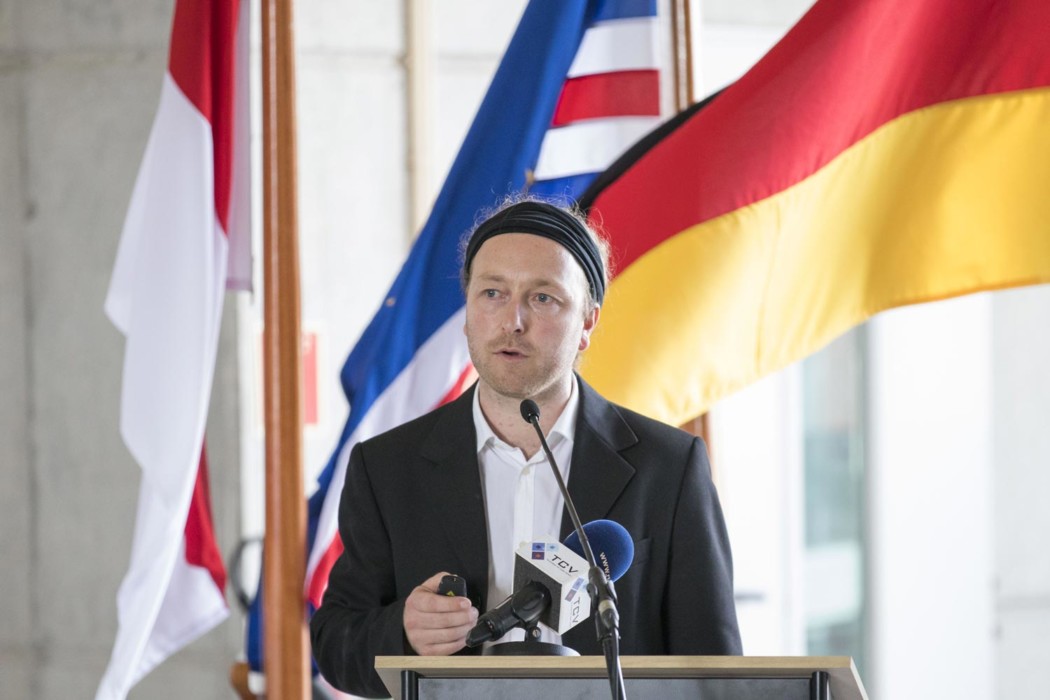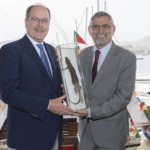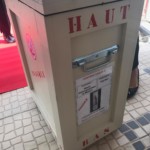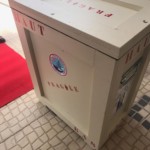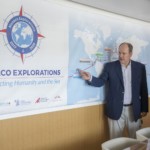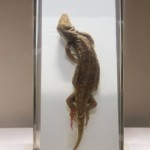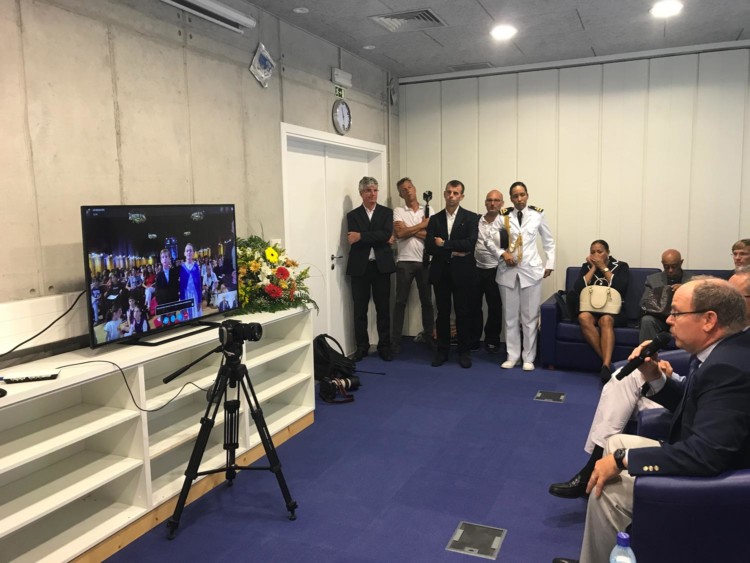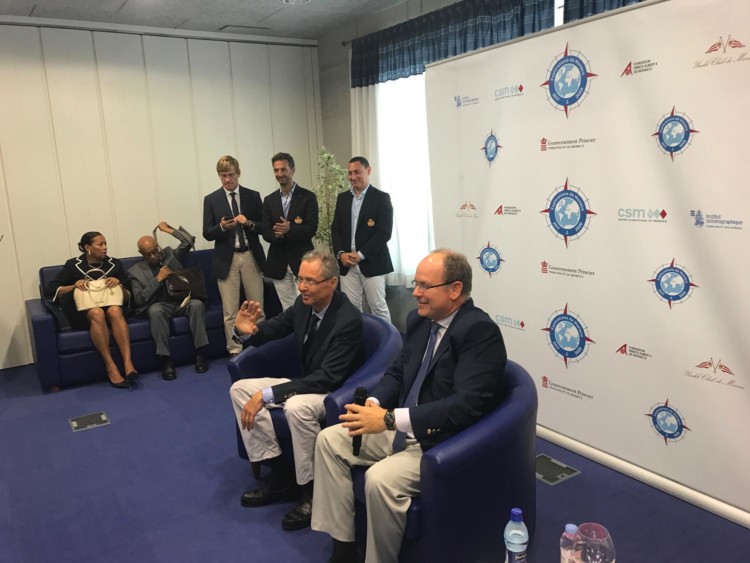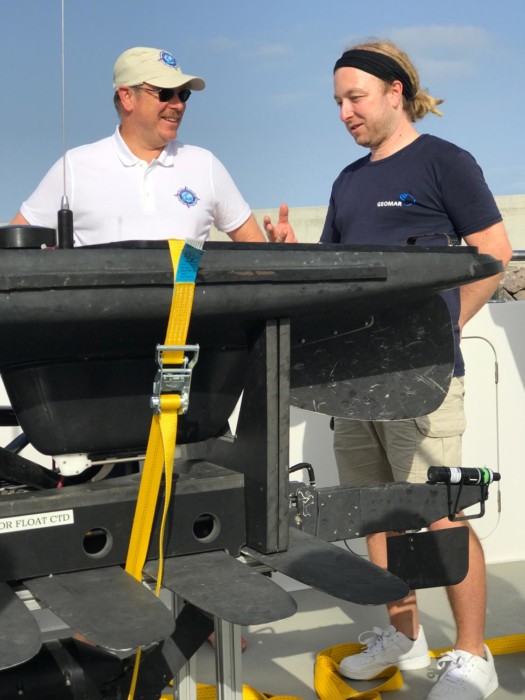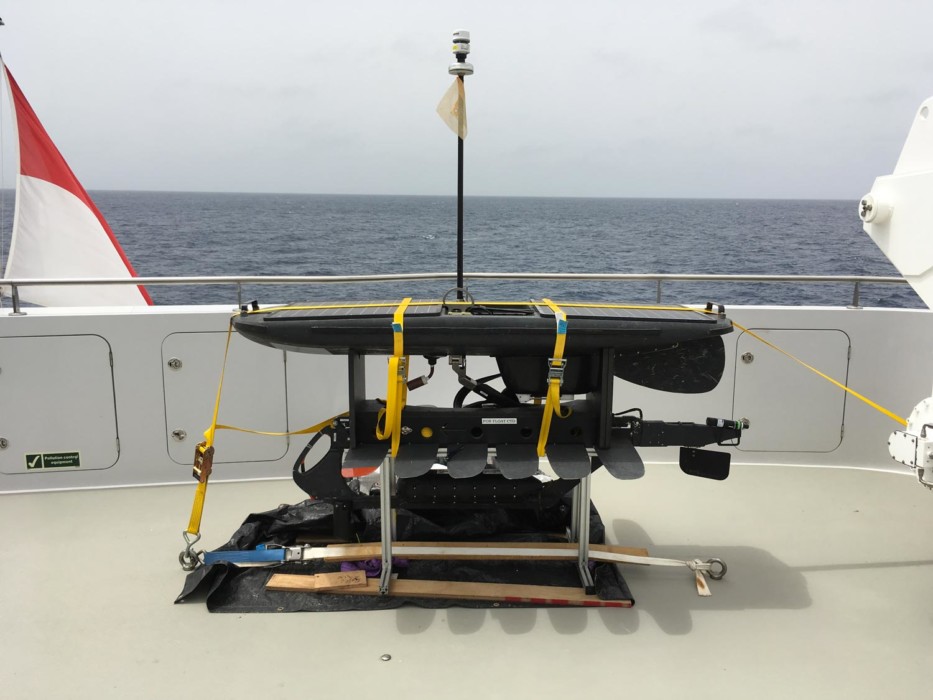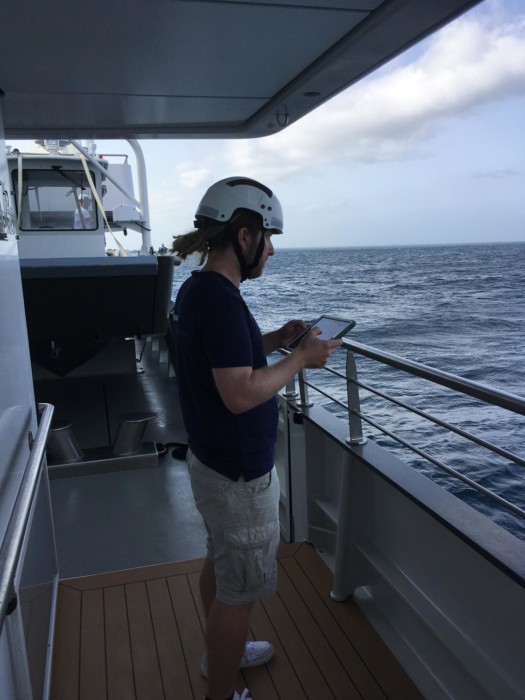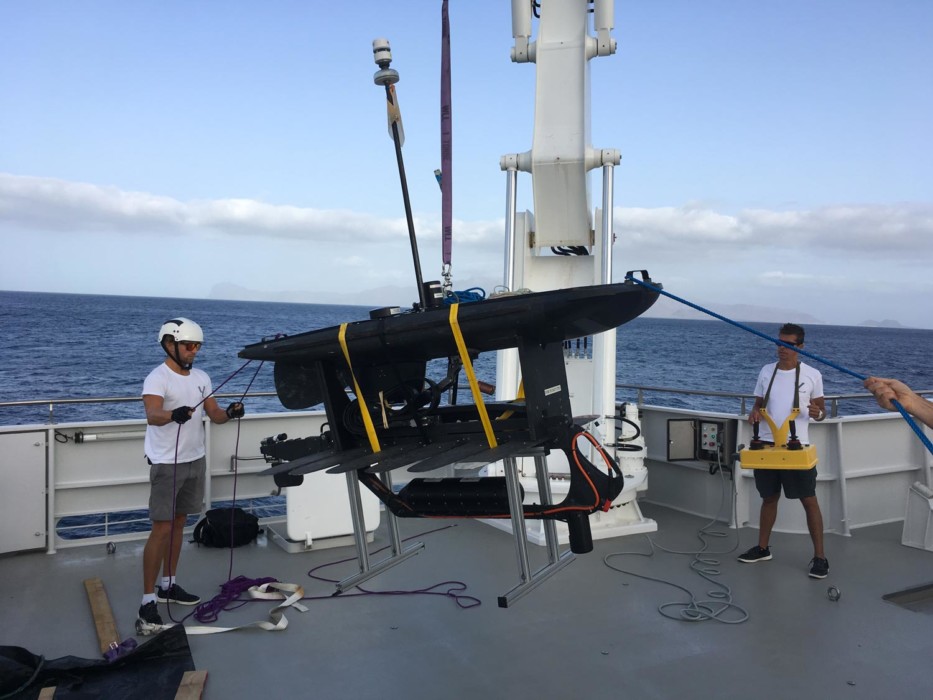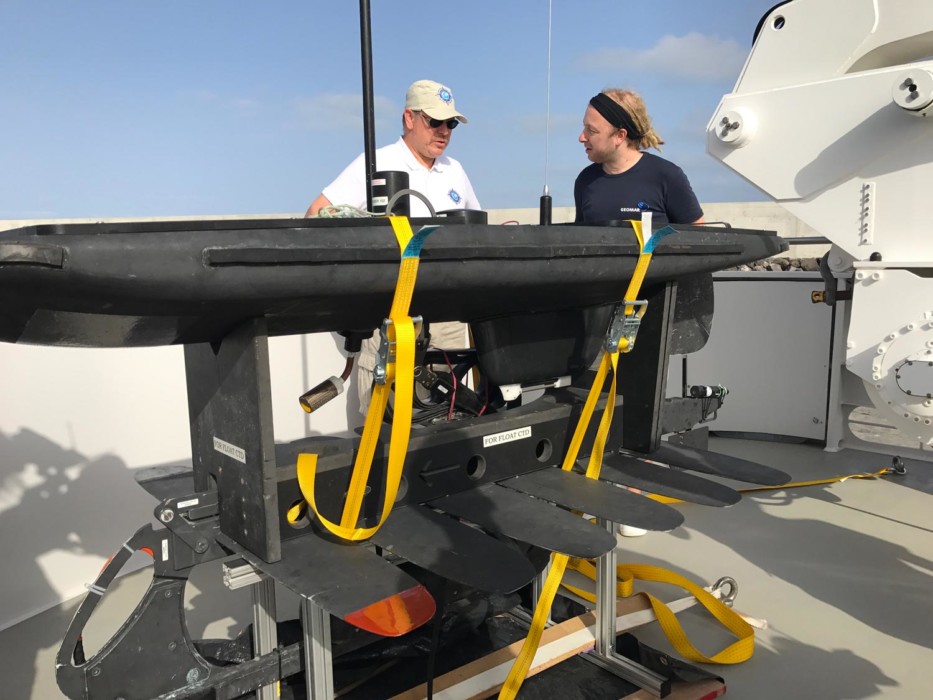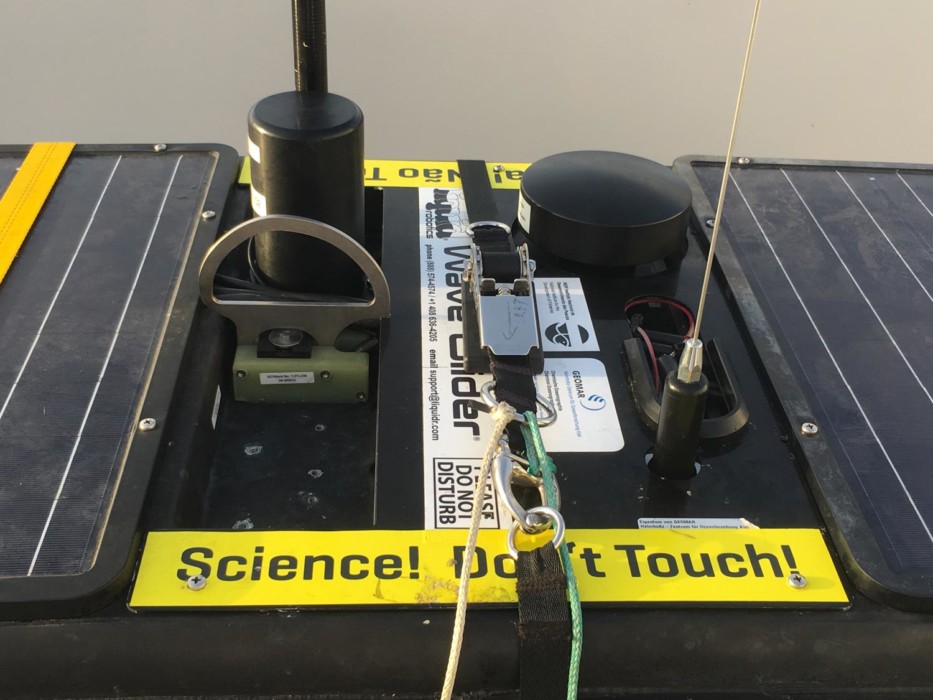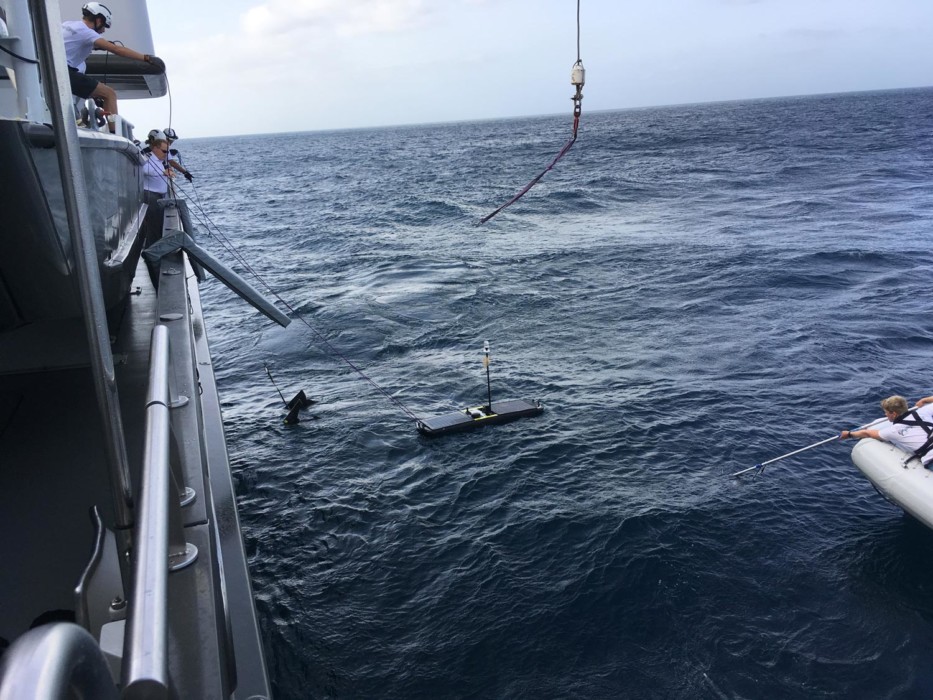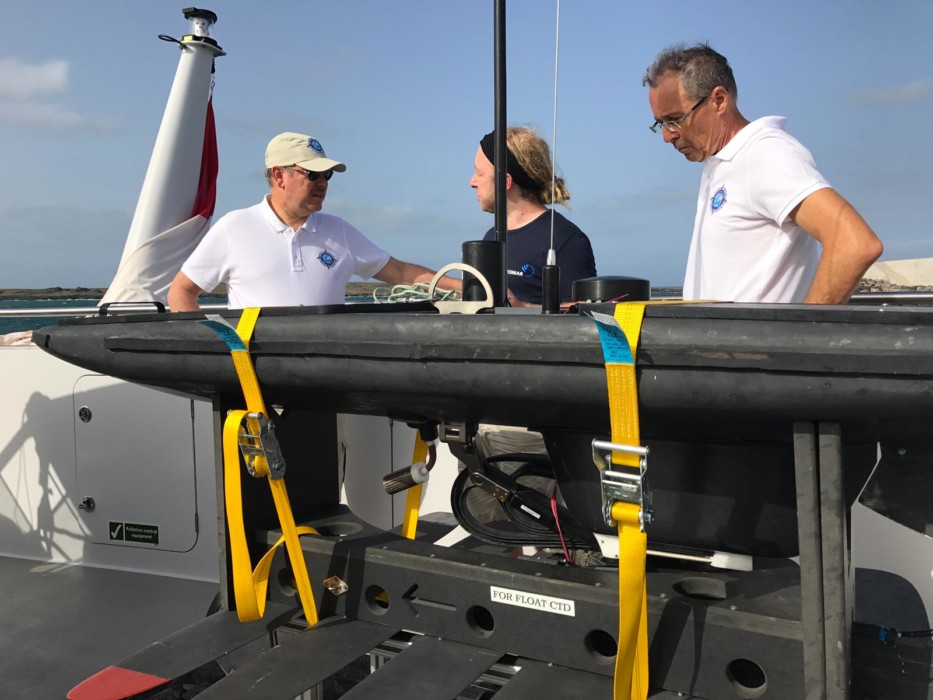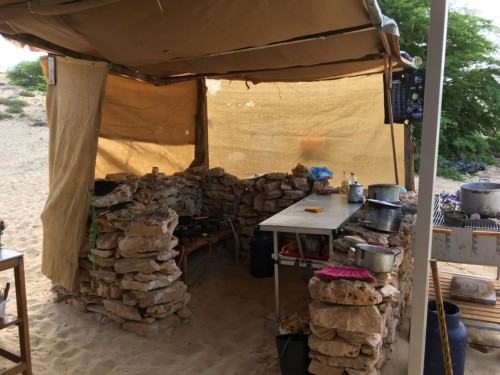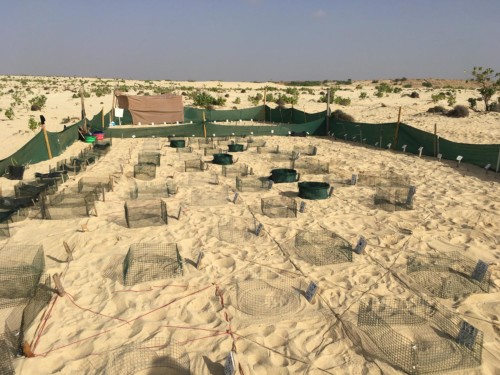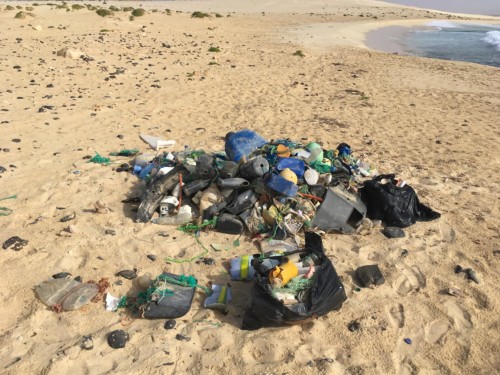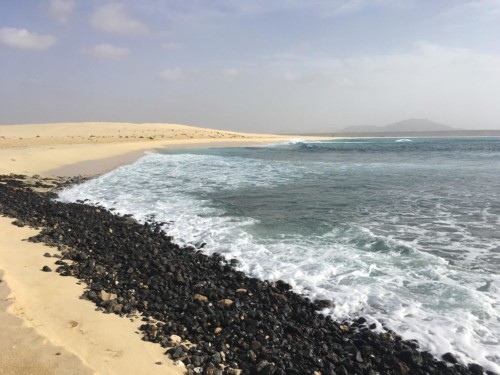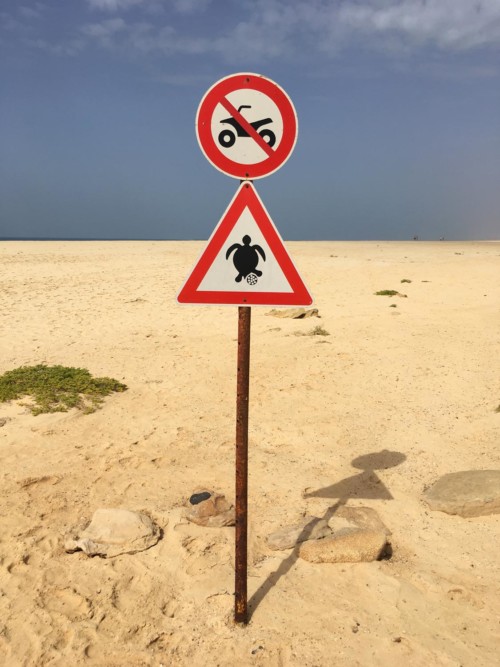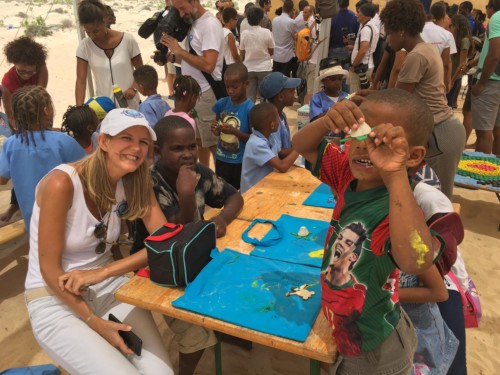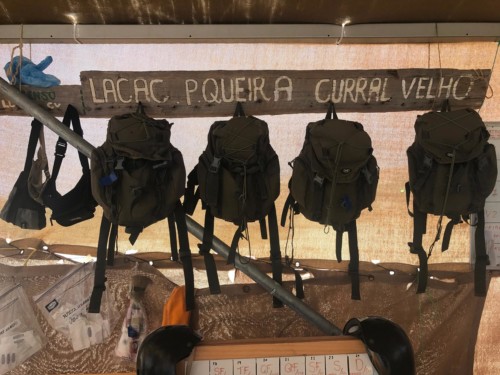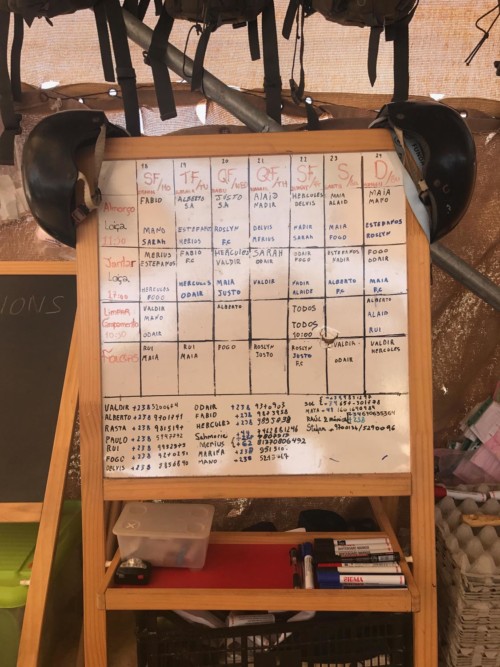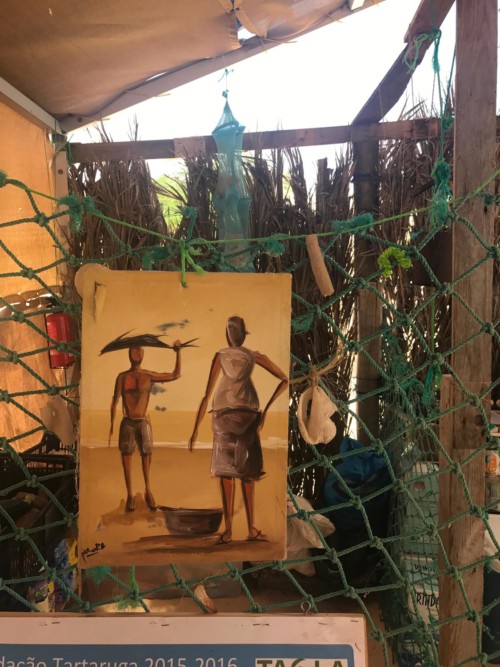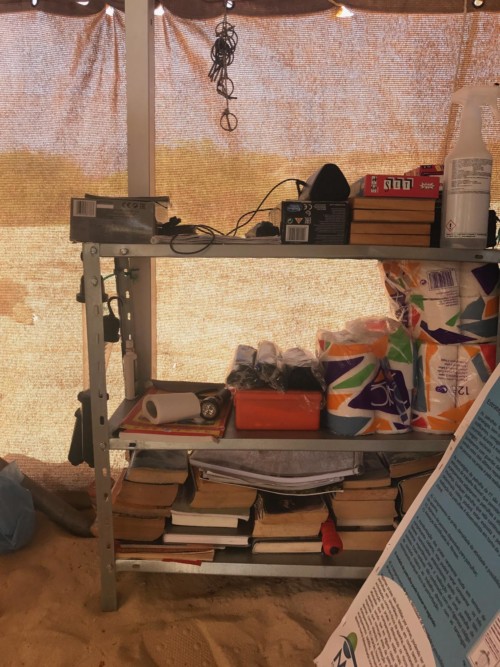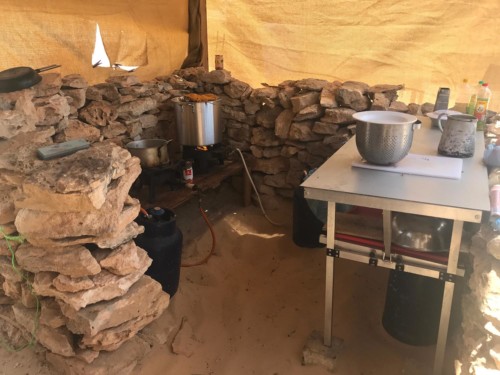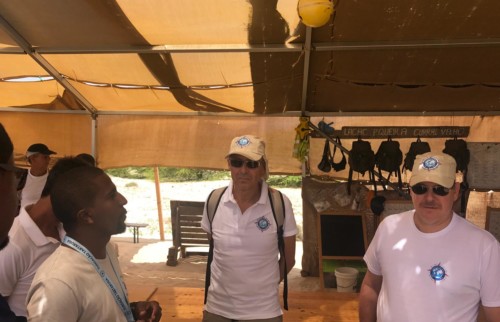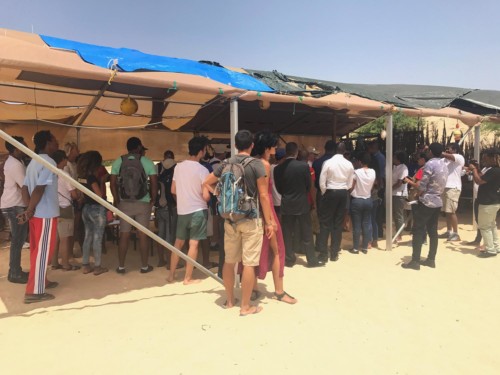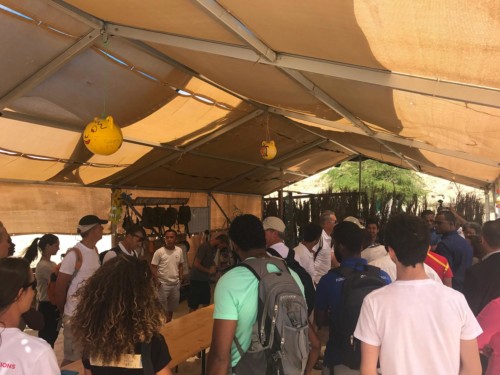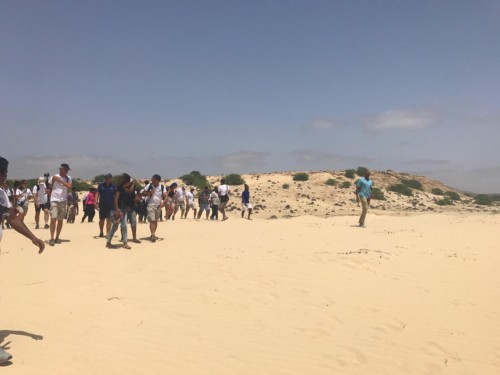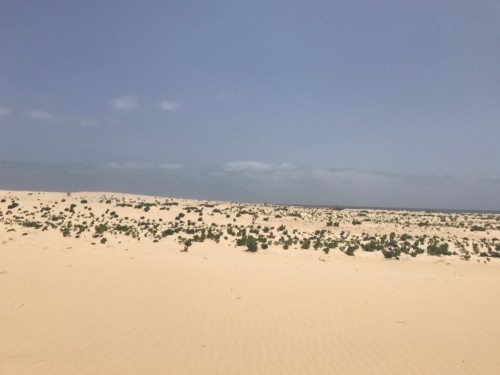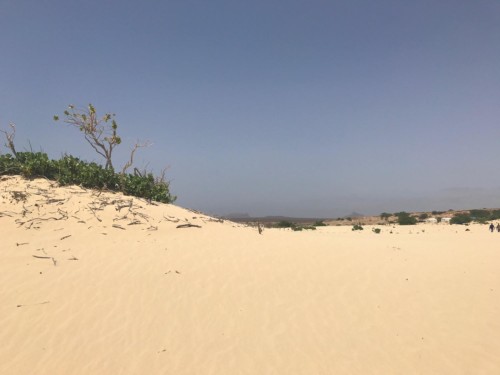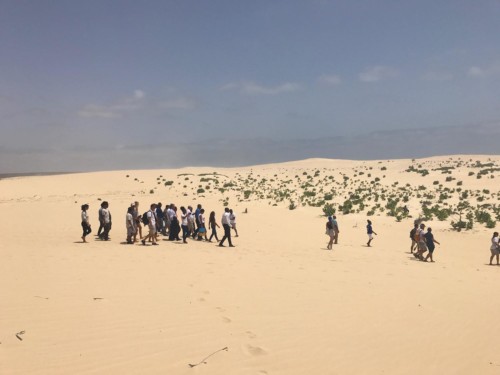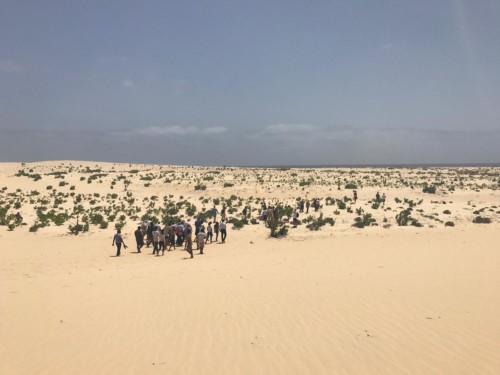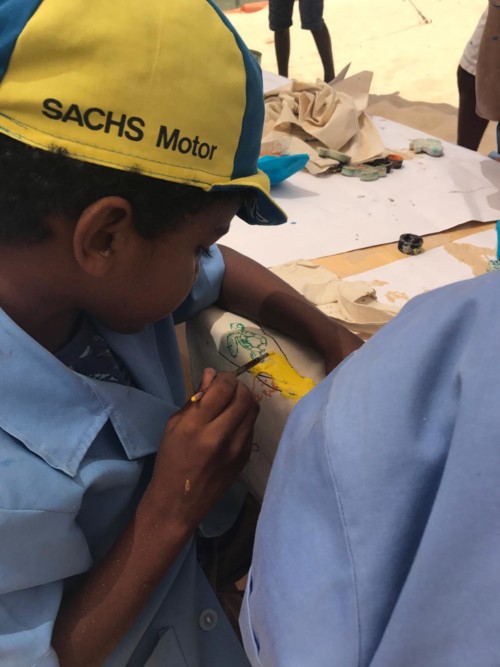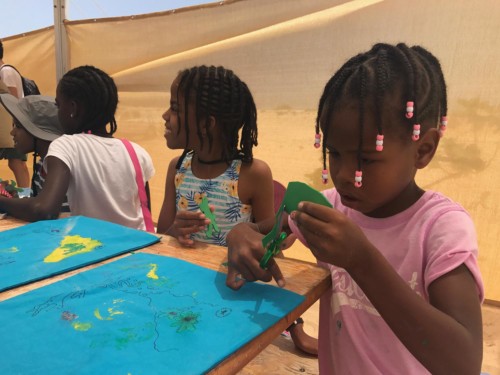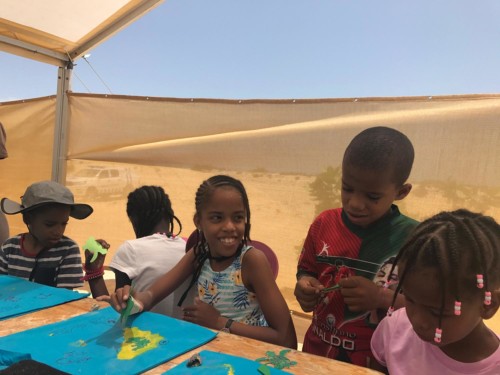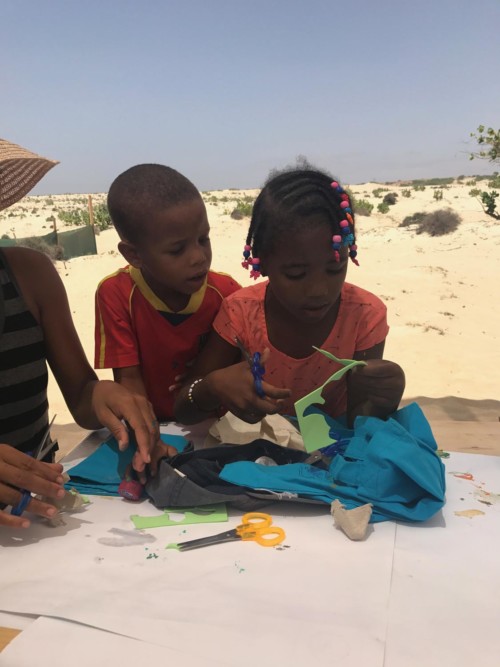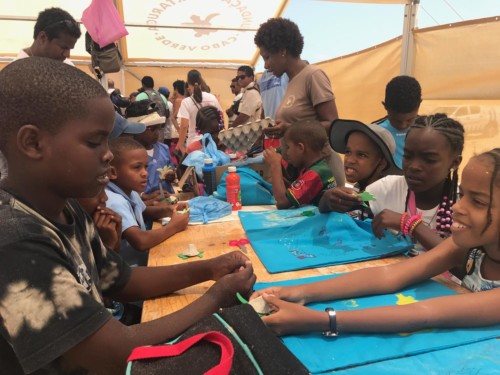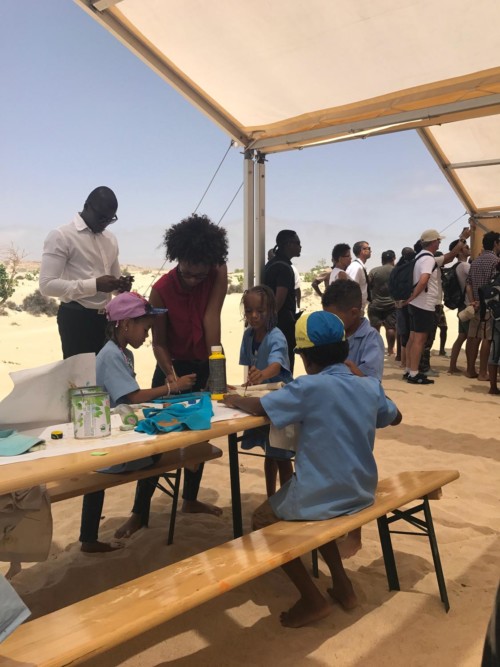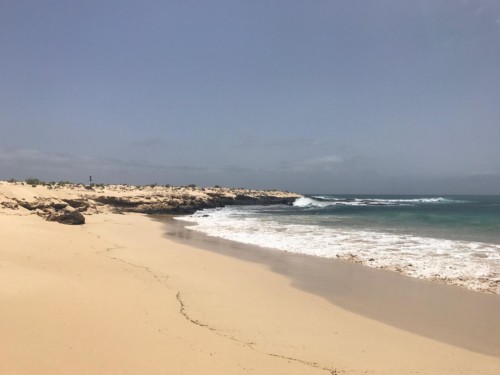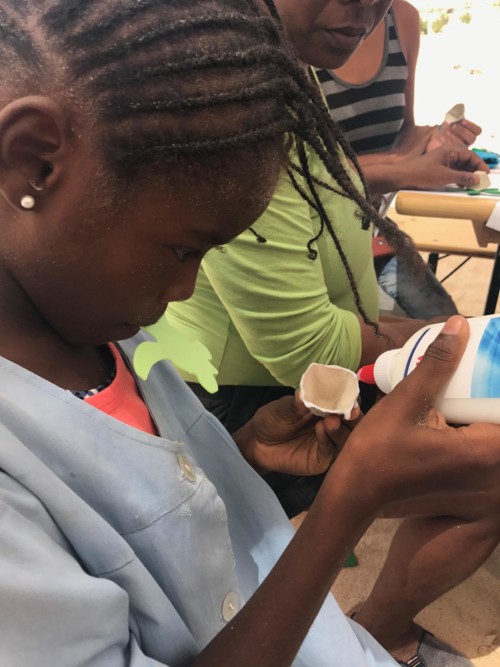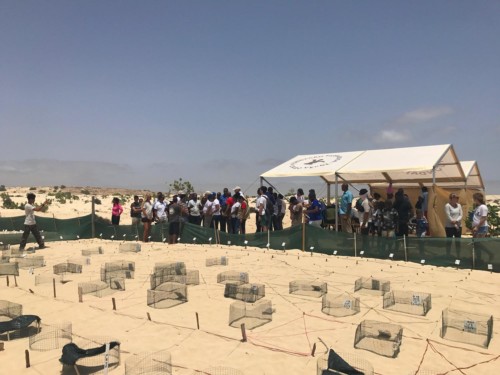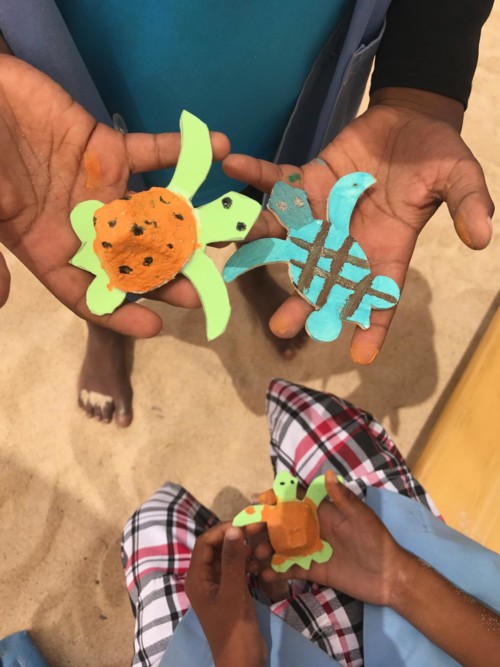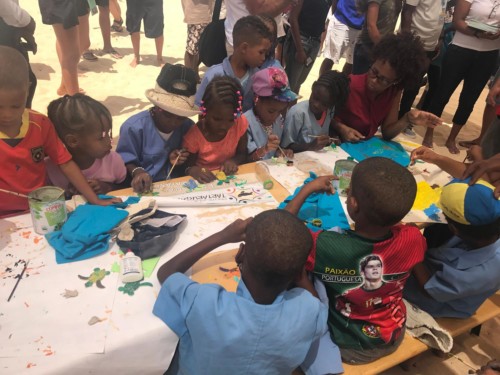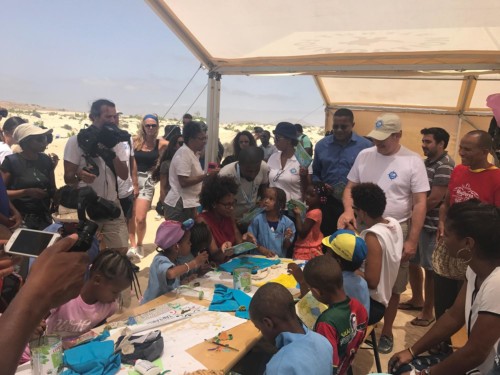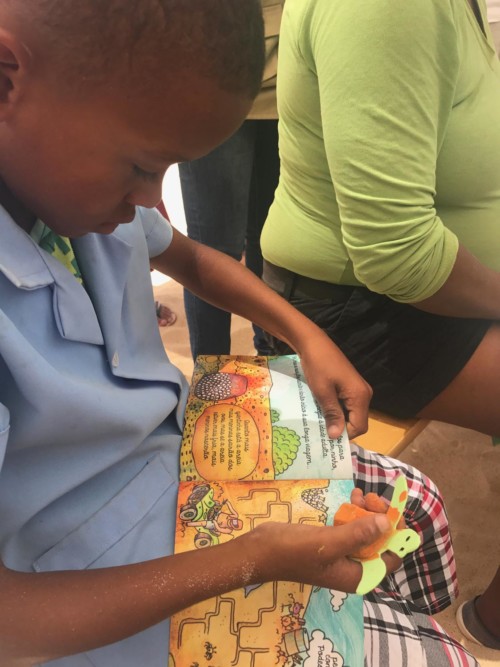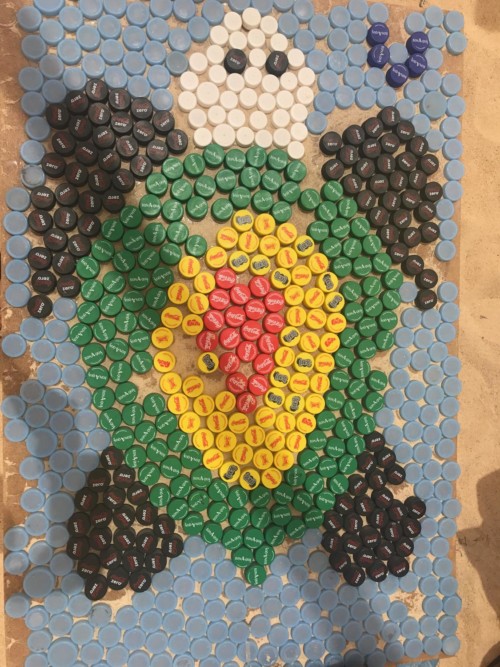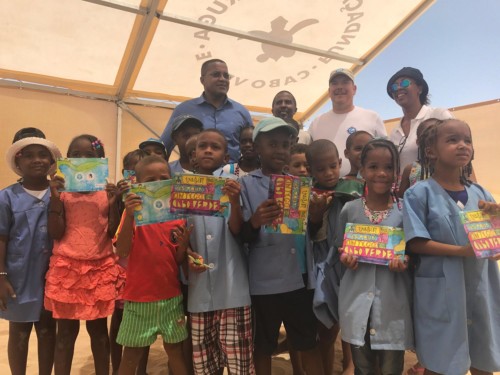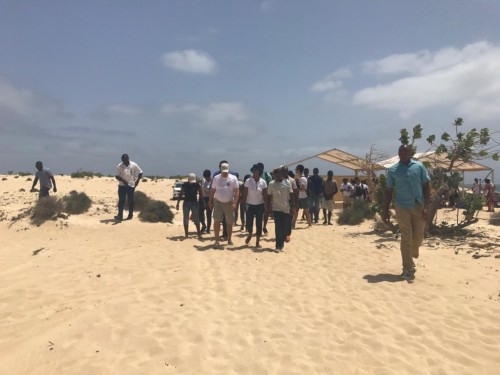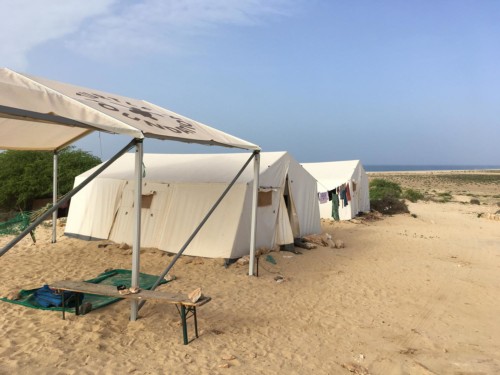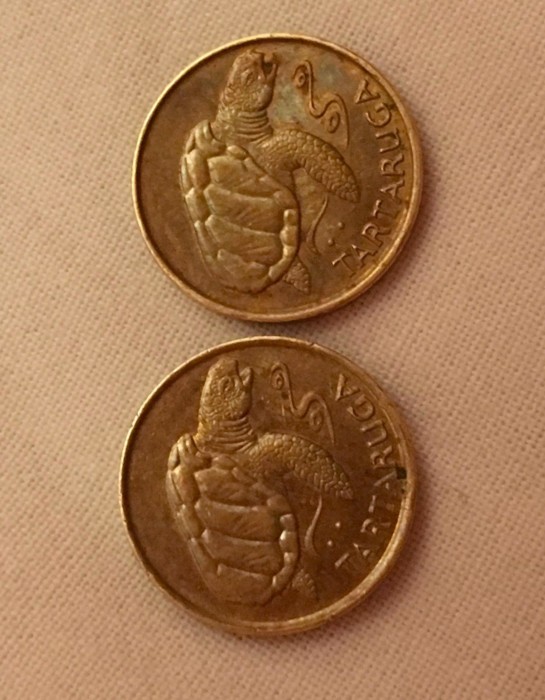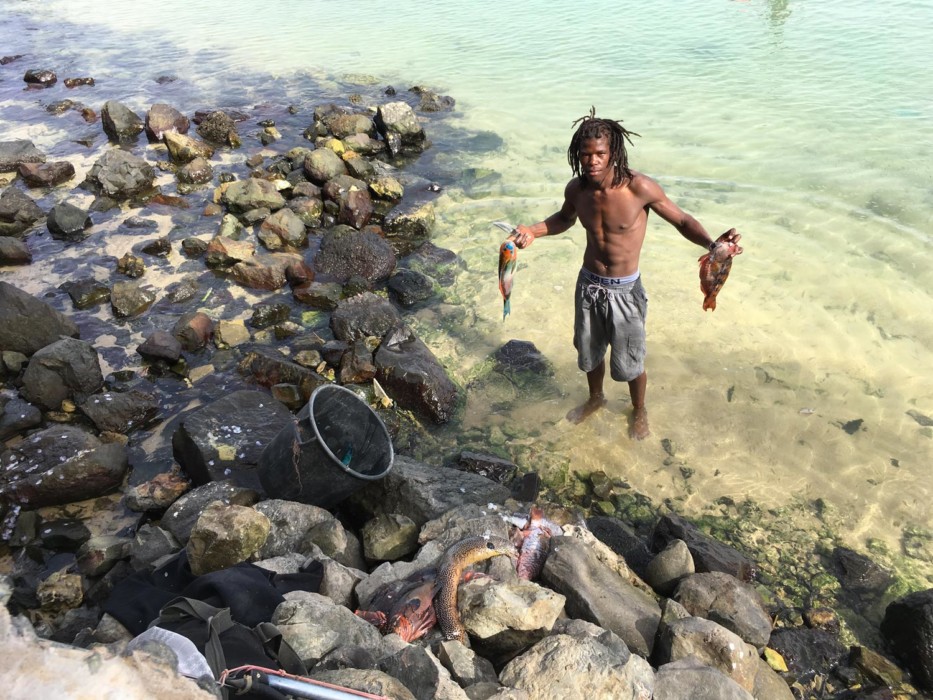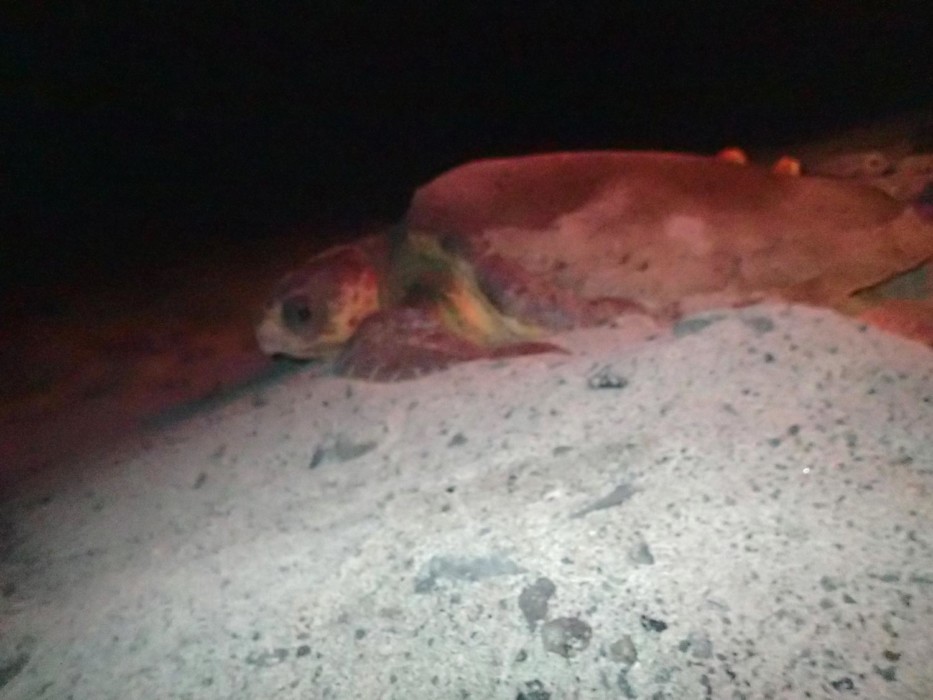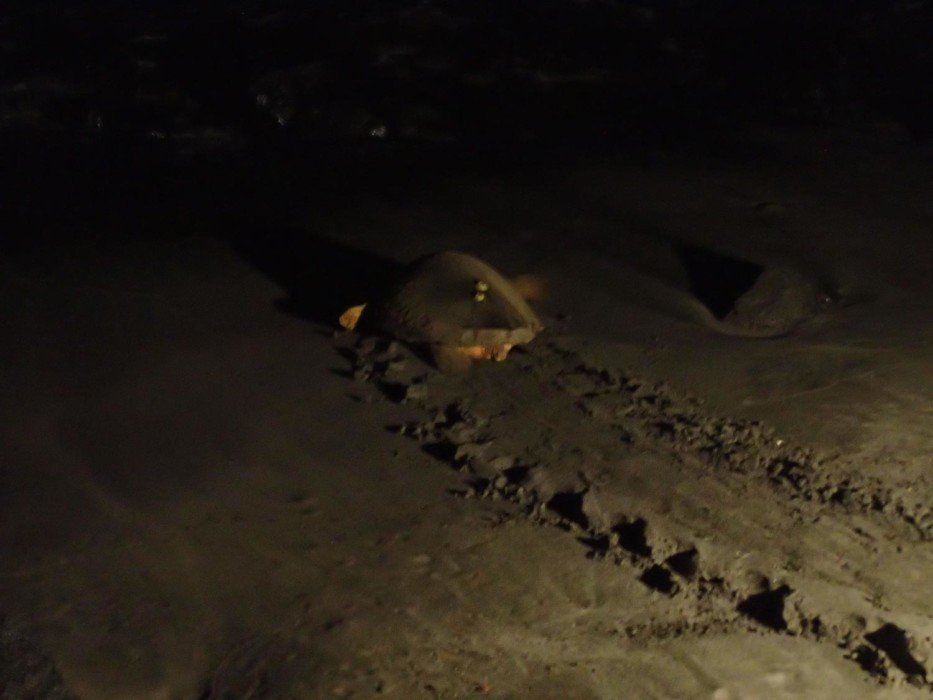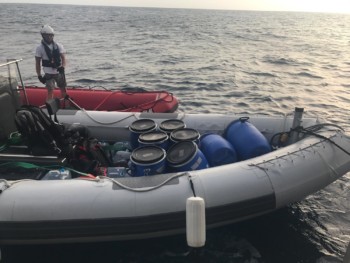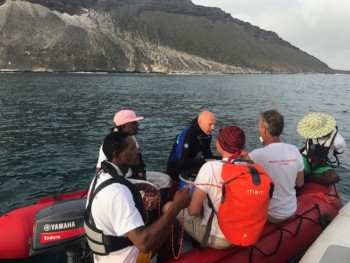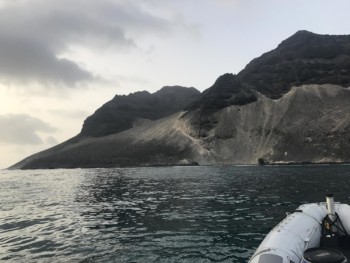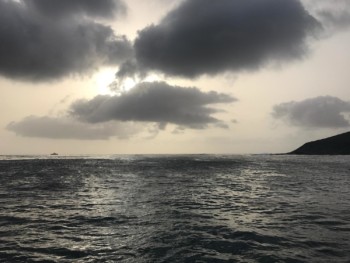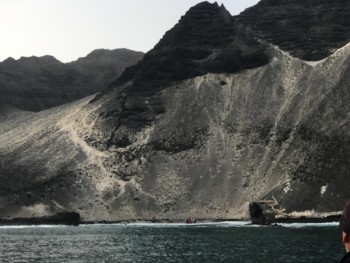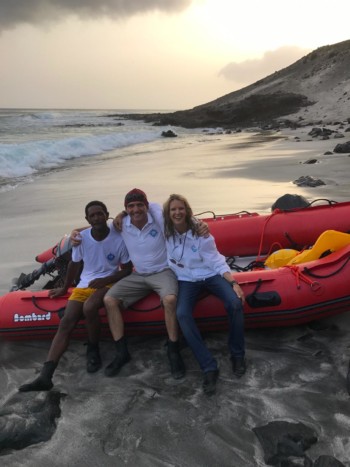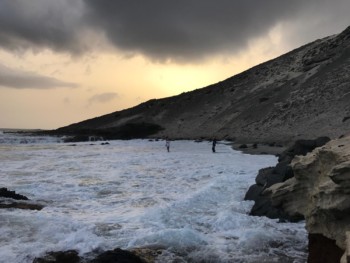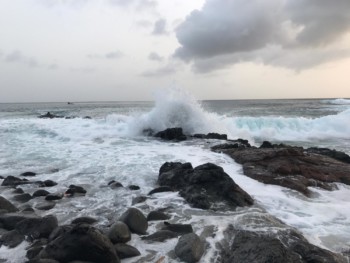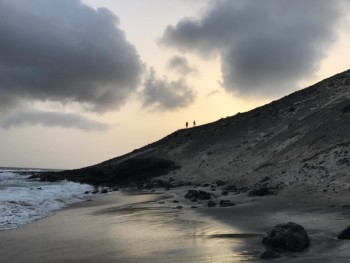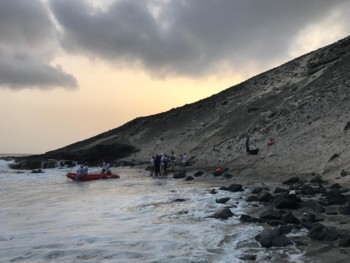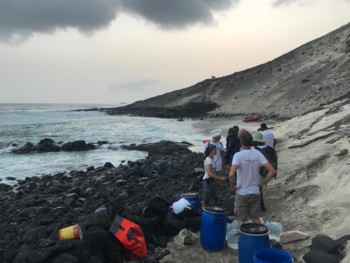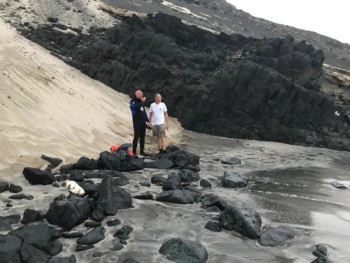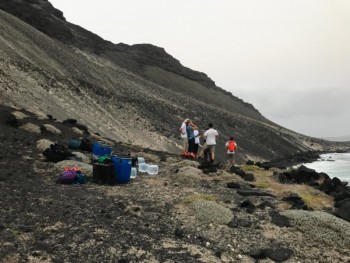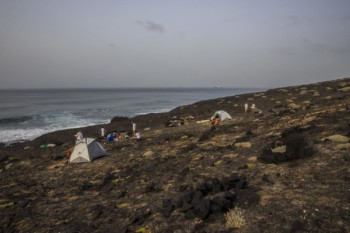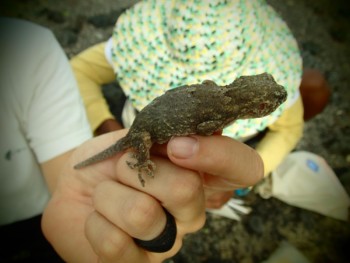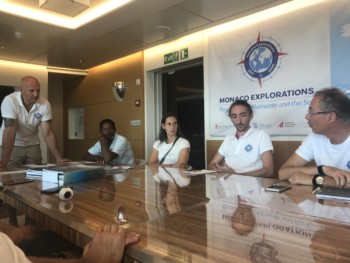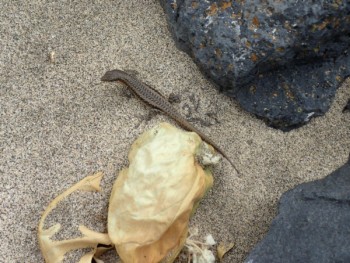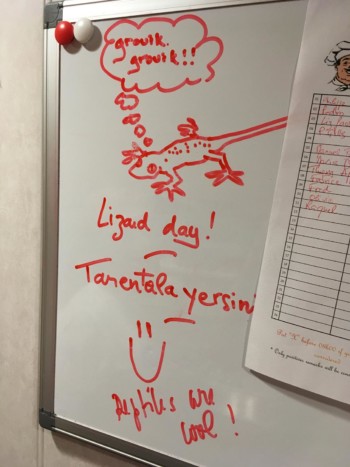Today, Tuesday December 5th, at the Oceanographic Museum of Monaco, Ushuaïa TV will premiere the first documentary film about Monaco Explorations’ first mission in Macaronesia. Today also marks the opening of a photography exhibit showcasing the mission. The exhibit is open to the public with admission to the museum until January 8.
Ushuaïa TV produced the first documentary film about Monaco Explorations work in Macaronesia. Watch the premier December 8th at 20:40 on Ushuaïa.
As the Yersin left the first mission in Macaronesia to cross the Atlantic, we welcomed a team from Aix-Marseille Université onboard. This team spent the 20-day transatlantic trip making 18 station stops and covering 6000km to study what is well known as the Sargasso Sea.
The team of 8 documented their time on the Yersin and the work they performed on this site. I encourage you to take a look and read about their part of the Monaco Explorations expedition there.
Here are photos from the expedition, courtesy of Olivier Borde.
During Prince Albert’s visit in Cabo Verde we christened the new GEOMAR Ocean Science Center Mindelo, Skyped with 300 schoolchildren in Monaco, visited the island of Branco to pick up Raquel and Aurélien and hear about their work looking for evidence of the giant skink, learned about the GEOMAR wave glider that is aboard the Yersin, and visited a sea turtle hatchery on the beaches of Boa Vista.
GEOMAR Ocean Science Center Mindelo
The GEOMAR Helmholtz Center for Ocean Research Kiel and the National Cabo Verdean Fisheries Research Institute INDP generously hosted an event to welcome HSH Prince Albert II to Cabo Verde with a first opening of their Ocean Science Center Mindelo (officially opening in late 2017).
The event was attended by nearly 200 people who heard speeches from:
- HSH Prince Albert II of Monaco
- Robert Calcagno, Director of the Oceanographic Museum of Monaco
- Carlos Évora, Director Nacional de Economia Marítima of the Republic of Cabo Verde
- Dr. Astrigilda Silveira, Vice-Rector of Universidade de Cabo Verde
- Dr. Osvaldina Silva, President of the Instituto Nacional de Desenvolvimento das Pescas (National Institute for Fisheries Development)
- Dr. Peter Herzig, Director of GEOMAR
- Dr. Björn Fiedler, Chief Scientist at GEOMAR
Read more about the creation of the Ocean Science Center Mindelo here event here, and watch the live broadcast on the GEOMAR Facebook Page.
Scinque Géant Returned to Cabo Verde
HSH Prince Albert II (with help from our partners at the Oceanographic Museum of Monaco and Head of Missions Robert Calcagno) returned to Cabo Verde for research purposes one of the giant skink specimens collected in the early 1900’s by Prince Albert 1st, which has been housed at the museum.
President of Cabo Verde, Jorge Carlos Fonseca, hosted Prince Albert II for this symbolic ceremony of collaboration between Monaco and Cabo Verde.
[vc_row][vc_column][gem_video video_src=”https://www.monacoexplorations.org/videos/TraditionalDance.m4v” image_src=”27327″][vc_column_text]
HSH Prince Albert II and Robert Calcagno Skype with 300 Schoolchildren in Monaco
Educating and involving youth in Monaco Explorations is one of the main goals of this campaign. There is no better place to start than at home. We were happy to facilitate a “virtual field trip” to Cabo Verde’s Ocean Science Center Mindelo via Skype for more than 300 schoolchildren at the Oceanographic Museum of Monaco. The children prepared questions for HSH Prince Albert II and Museum Director, Robert Calcagno.
You can watch the Skype session from the Museum’s Facebook Page.
Questions from the kids:
- Is your family with you on the boat?
- Do you miss them?
- When are you going to come back to Monaco?
- The monk seals could disappear. How are you going to save them?
- What can we do to help save the oceans?
- The expedition is 3 years! Will the crew on the boat be able to see their families?
[/vc_column_text][/vc_column][vc_column][/vc_column][vc_column][/vc_column][vc_column][/vc_column][/vc_row]
This post is continued from Part One
During Prince Albert’s visit in Cabo Verde we christened the new GEOMAR Ocean Science Center Mindelo, Skyped with 300 schoolchildren in Monaco, visited the island of Branco to pick up Raquel and Aurélien and hear about their work looking for evidence of the giant skink, learned about the GEOMAR wave glider that is aboard the Yersin, and visited a sea turtle hatchery on the beaches of Boa Vista.
Back to Branco
In a recent blog post, we explained that scientists Raquel Vasconcelos and Aurélien Miralles were camping on the island of Branco to collect samples and search for evidence of the presumed extinct giant skink. Today their work is complete and HSH Prince Albert II makes the trip to Branco to join them for a few hours and learn about their time there, and find out first hand what, if anything, they have discovered about the giant skink.
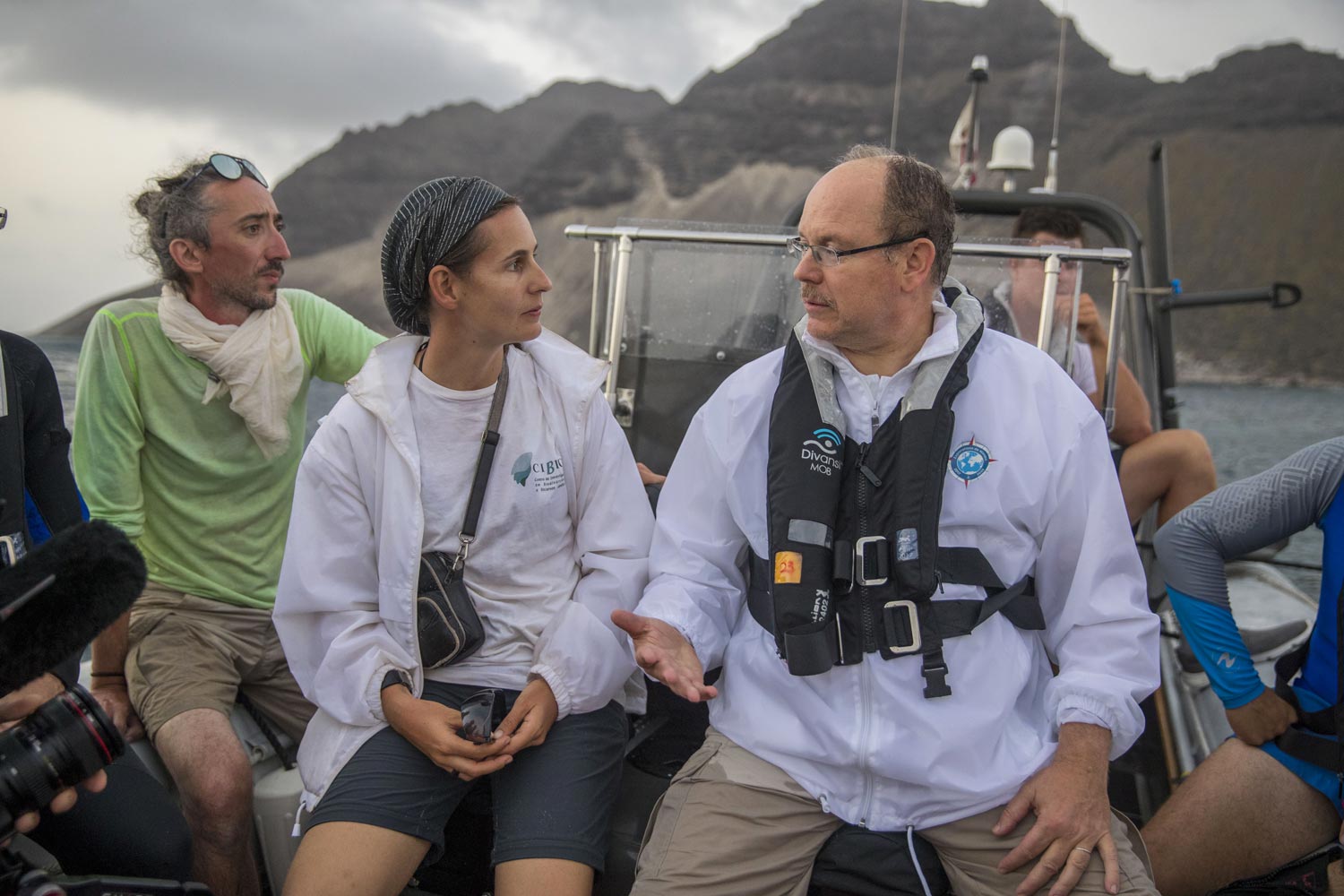
GEOMAR Wave Glider
Dr. Björn Fiedler of GEOMAR talked with HSH Prince Albert II to explain the purpose and capabilities of the wave glider and bottom lander, both of which were deployed from the Yersin.
“Jointly with Monaco Explorations we will launch state-of-the-art measuring platforms such as lander and wave glider to collect physical, chemical and biological data which are important for future marine protected areas” said Dr. Björn Fiedler from GEOMAR.
Sea Turtle Hatchery
Sea turtles have been on this planet since the dinosaur ages and are disappearing all around the world, becoming an endangered species in just the last 200 years. Sea turtles play a vital role in marine ecosystems. You can read more about Why Healthy Oceans Need Sea Turtles here.
The Turtle Foundation, Project Cabo Verde invited Monaco Explorations to Porto Ferreira beach on Boa Vista Island so that we could learn about their work and gain a better understanding of the importance of sea turtle preservation in the larger scope of ocean conservation. Prince Albert II visited the hatchery and talked with the scientists who are stationed there and he gave children’s books, depicting the threats that sea turtles face, to the kids who were participating in a day camp with the Turtle Foundation.
[vc_row][vc_column][gem_video video_src=”https://www.monacoexplorations.org/videos/Hatcherywelcome.m4v” image_src=”27292″][vc_column_text]
During Monaco Explorations visit to the hatchery a few days before HSH Prince Albert arrived, we were very lucky to have been invited to witness a turtle laying her eggs at night. (These photos are courtesy of Head of Mission, Pierre Gilles)
[/vc_column_text][/vc_column][vc_column][/vc_column][/vc_row]
After leaving Branco, we traveled to the neighbor island of Santa Luzia where the GEOMAR team placed the bottom lander in its next location just off the coast at about 20m depths. It was a very windy morning and we were lucky to have professional divers with us to help determine a good location in such a rough sea. It was quite a chore also for the Yersin crew to get the bottom lander off the deck and into the water, as the wind sways the arm of the crane and threatens damage to the vessel.
After placing the bottom lander, the Yersin traveled back to Mindelo to welcome HSH Prince Albert II on the mission. These dolphins escorted us for a long period of that trip. Here is an unedited video taken with an iPhone where you can really get a feel for the dolphins that were traveling on both sides of the Yersin, and hear the wind and the sea. Enjoy!

[vc_row][vc_column][gem_video video_src=”https://www.monacoexplorations.org/videos/dolphins.m4v” image_src=”27326″][vc_column_text]
[/vc_column_text][/vc_column][/vc_row]
In June, scientists Raquel Vasconcelos from CIBIO-InBIO and Aurélien Miralles from the National Museum of Natural History in Paris came to the Oceanographic Museum of Monaco to examine Scinque Géant specimens brought to Monaco from the island of Branco in the Cap Verde archipelago in the early 1900’s by Prince Albert the 1st. This lizard species is said to be extinct but during our time here in Cabo Verde, we hope to be able to find evidence of a live Scinque Géant.
The uninhabited island of Branco has a rough terrain, is very windy, and has only one tiny stretch of beach that disappears at high tide. Because it is a difficult island to get to, let alone spend any amount of time on, there is not much research done there. However, despite the less than ideal conditions, Raquel and Aurélien managed to camp on Branco for 3 nights to collect samples for their research, and looking for evidence of the Scinque Géant.
While we traveled to Branco, we prepared the camping materials in small drums to transport them, and worked with Yersin Captain Jean Dumarais to determine the best way to get ashore with as few people and trips back and forth with the tenders as possible. One of our biggest difficulties with the work Raquel and Aurélien will be doing is that the Yersin needs to travel away from Branco while they are camping. There is no cell service, so we have to leave a satellite phone and have them check in each hour to confirm safety.
We arrived near Branco late in the afternoon and had to work fast to get the team ashore and their camp set up before sundown. The Yersin anchored a few hundred meters off the coast. The tenders took us near the shore, and from the tenders we transferred everything to the small dinghy with the local fisherman to go to the beach. It took 4 trips in total, and on the second trip, a huge wave capsized the small dinghy throwing 5 people and all the equipment into the sea. Luckily we were ok, and recovered everything before the sea carried anything away. We worked quickly to set up camp and do a few interviews before leaving the small team to fend for themselves for a few days.
Branco was quite the adventure. Raquel and Aurélien were able to collect many useful samples, but found no evidence that the giant skink still exists.
